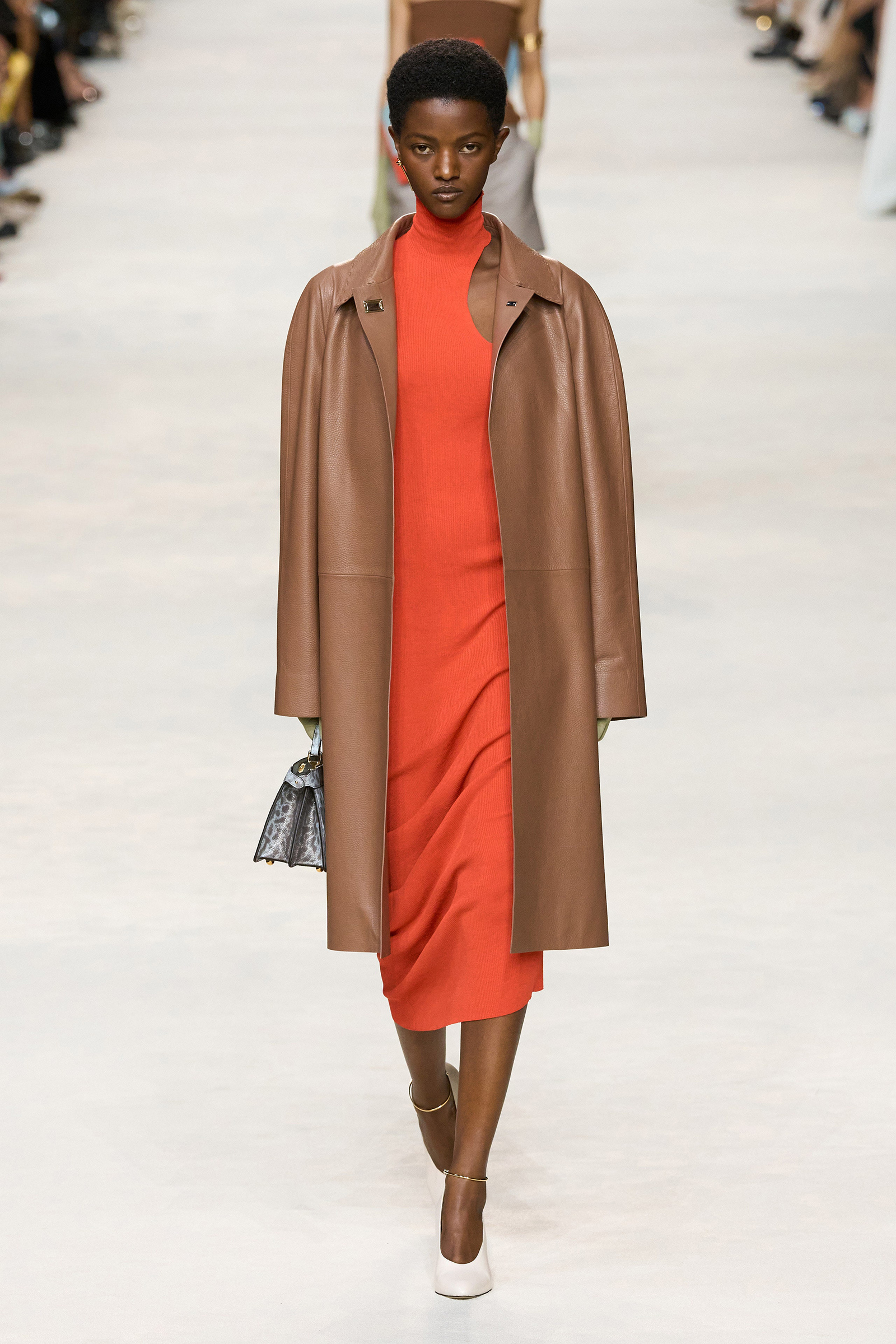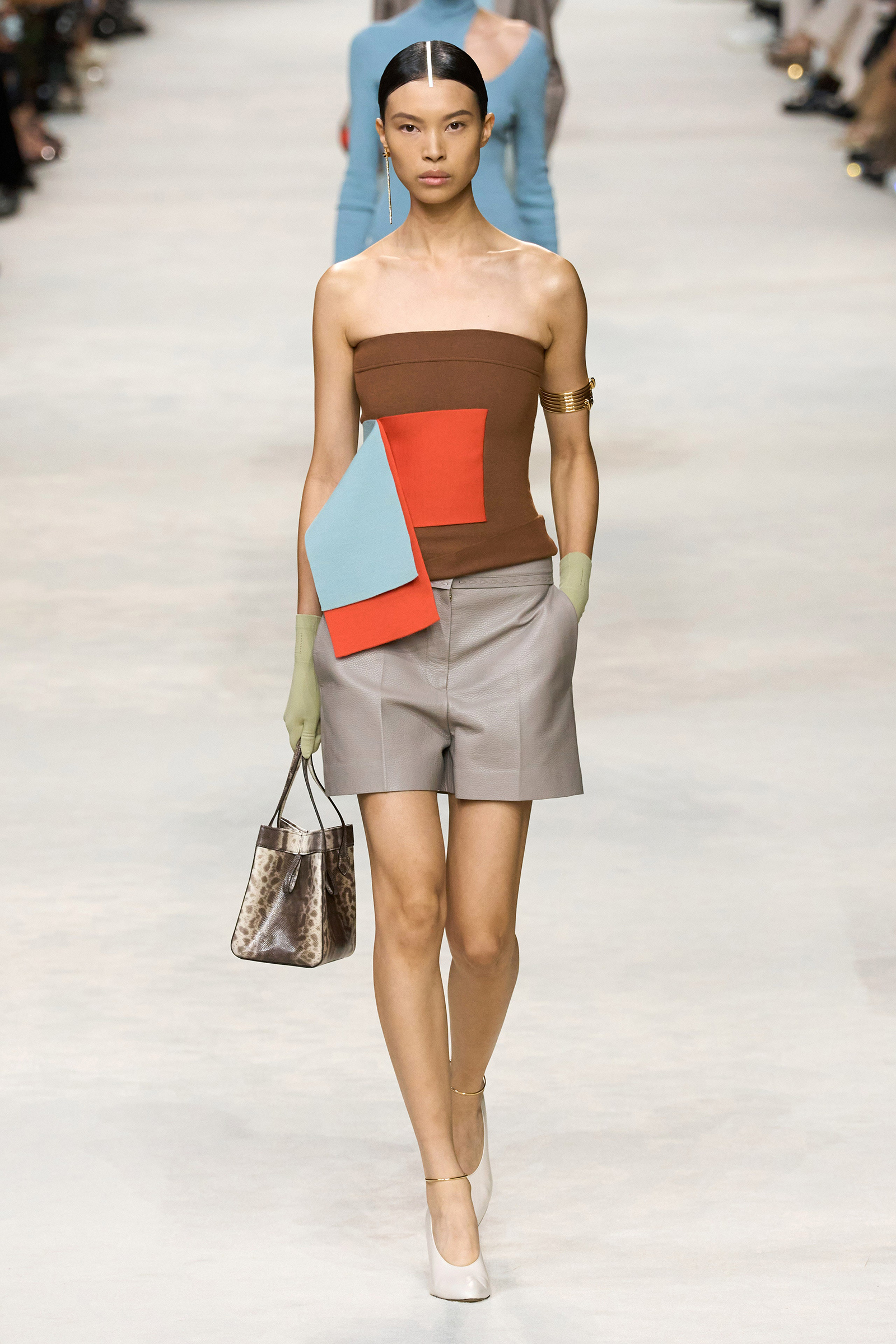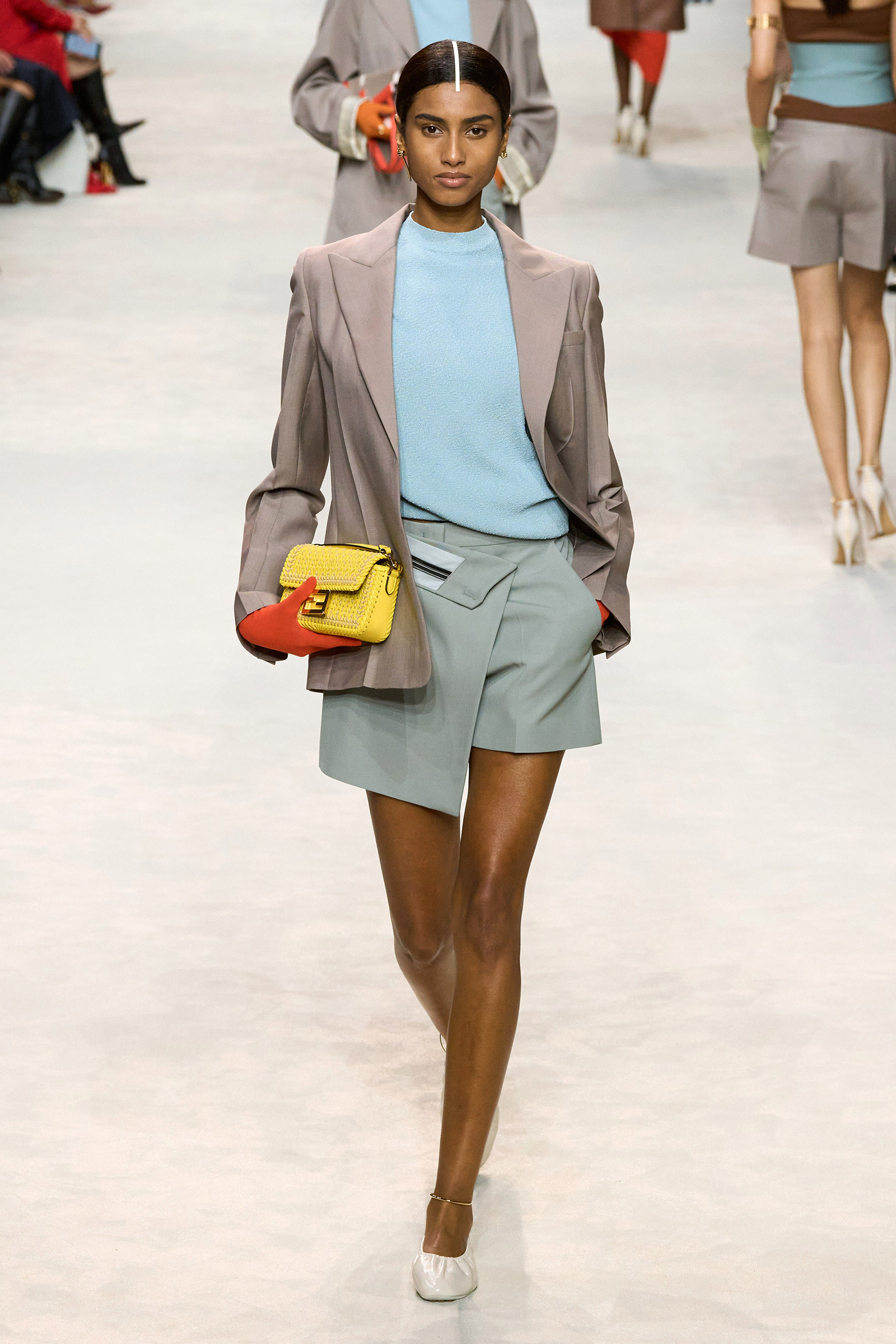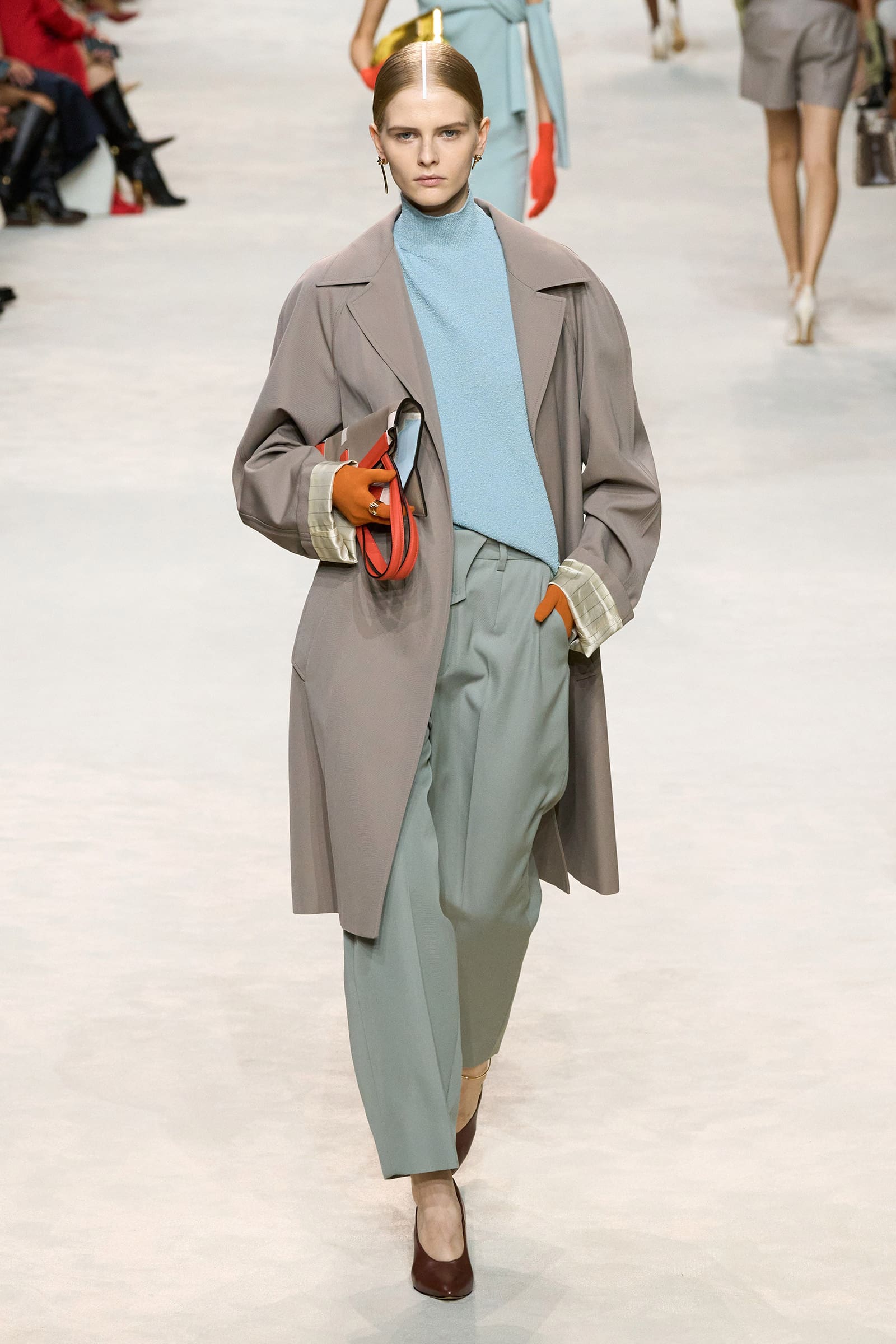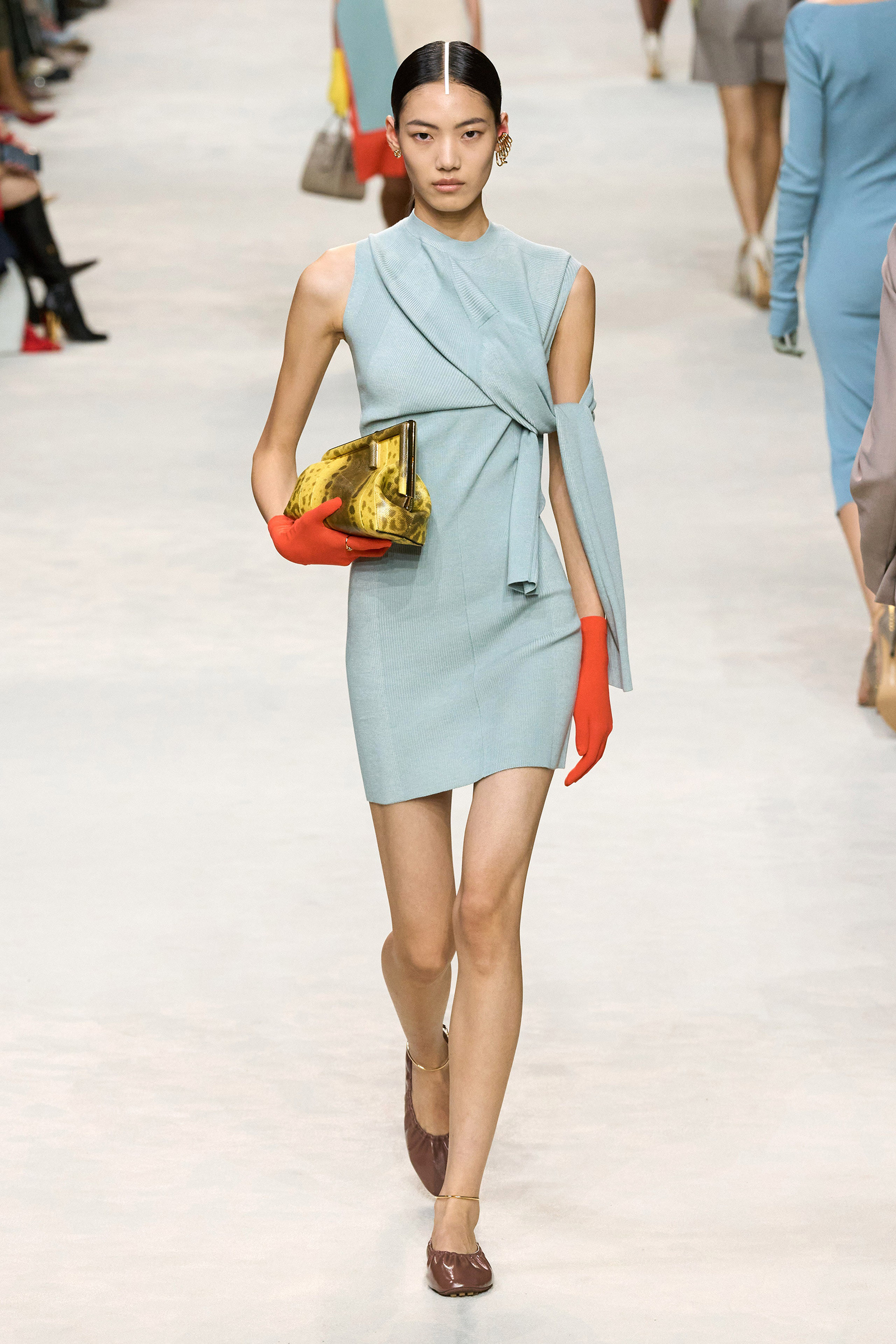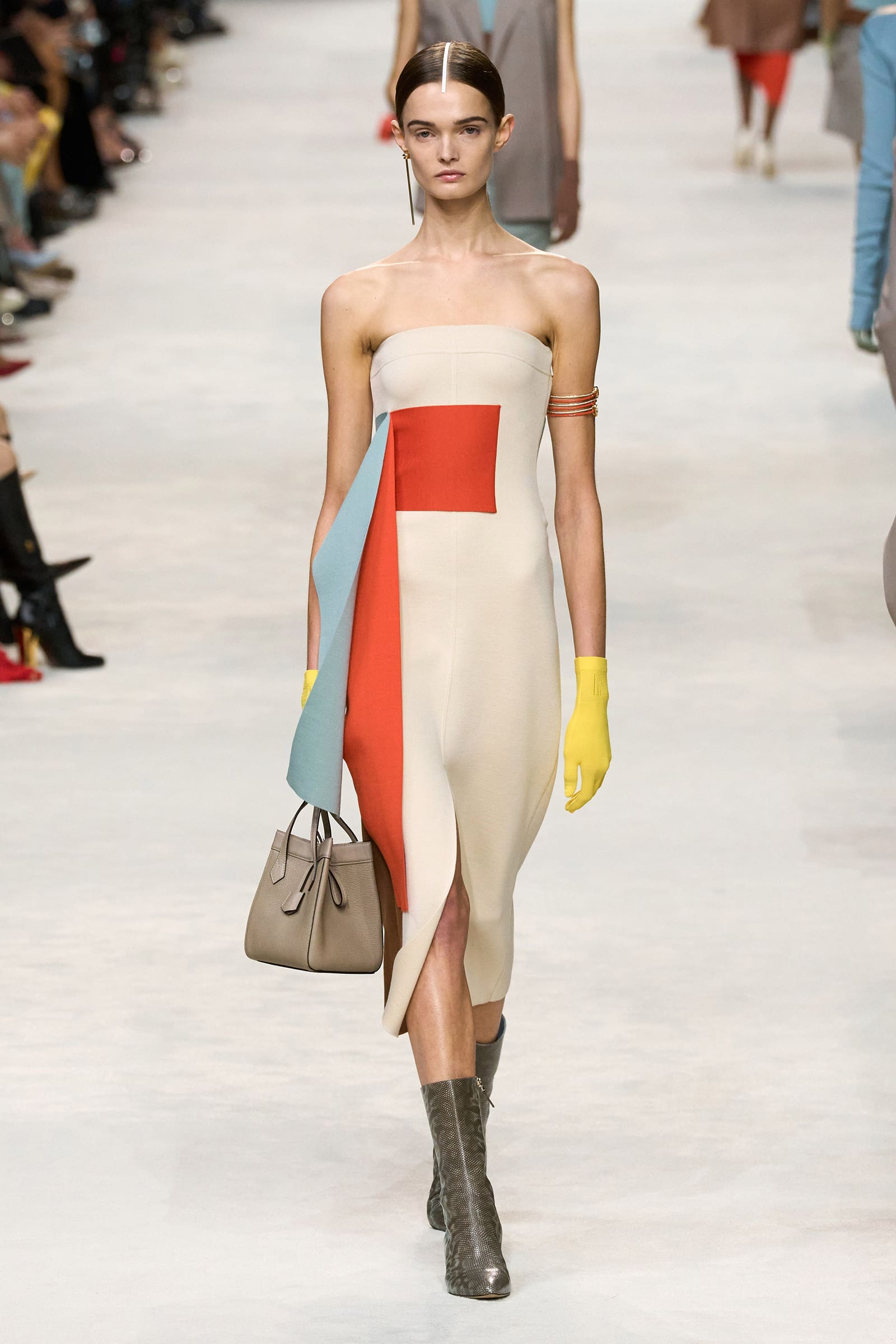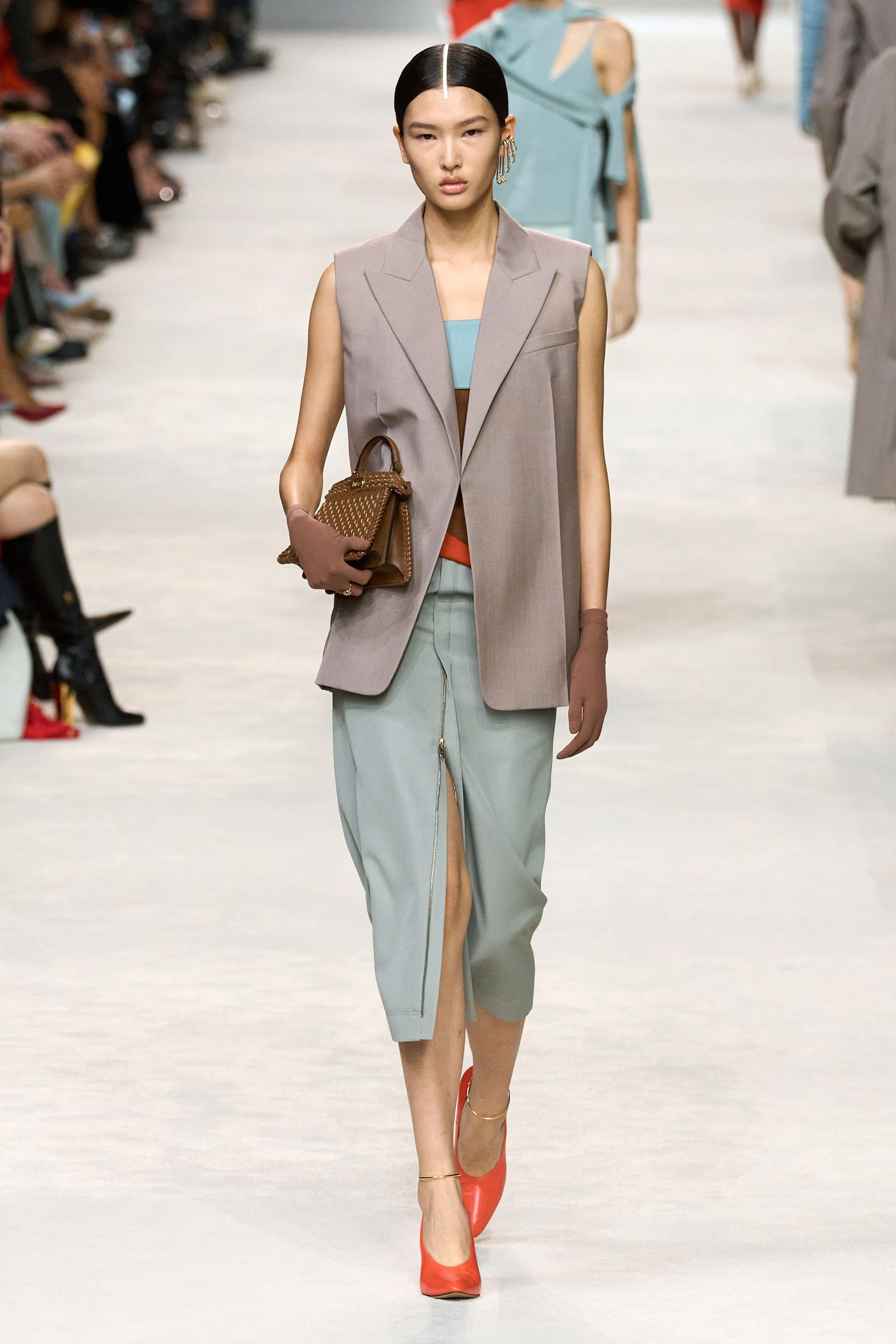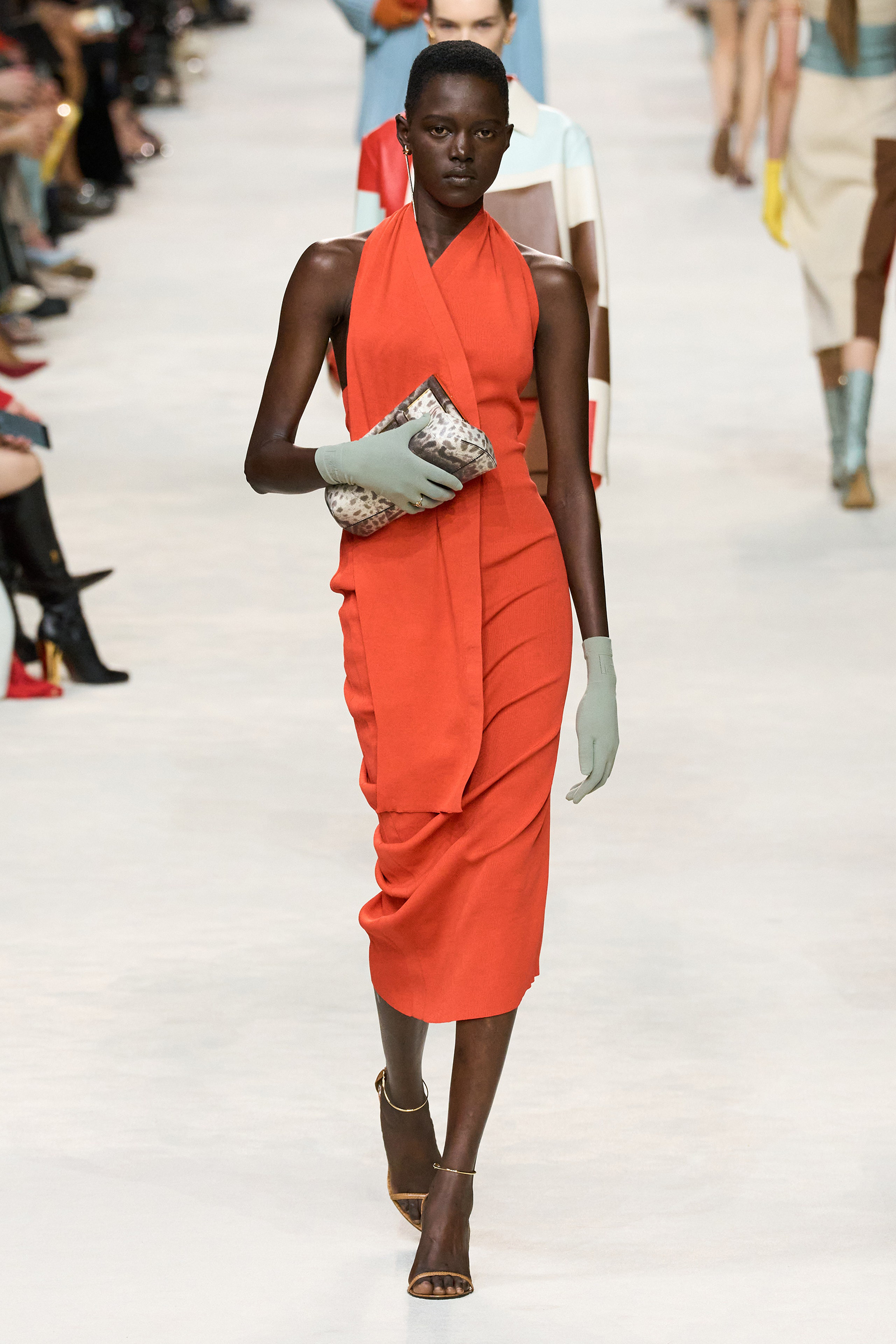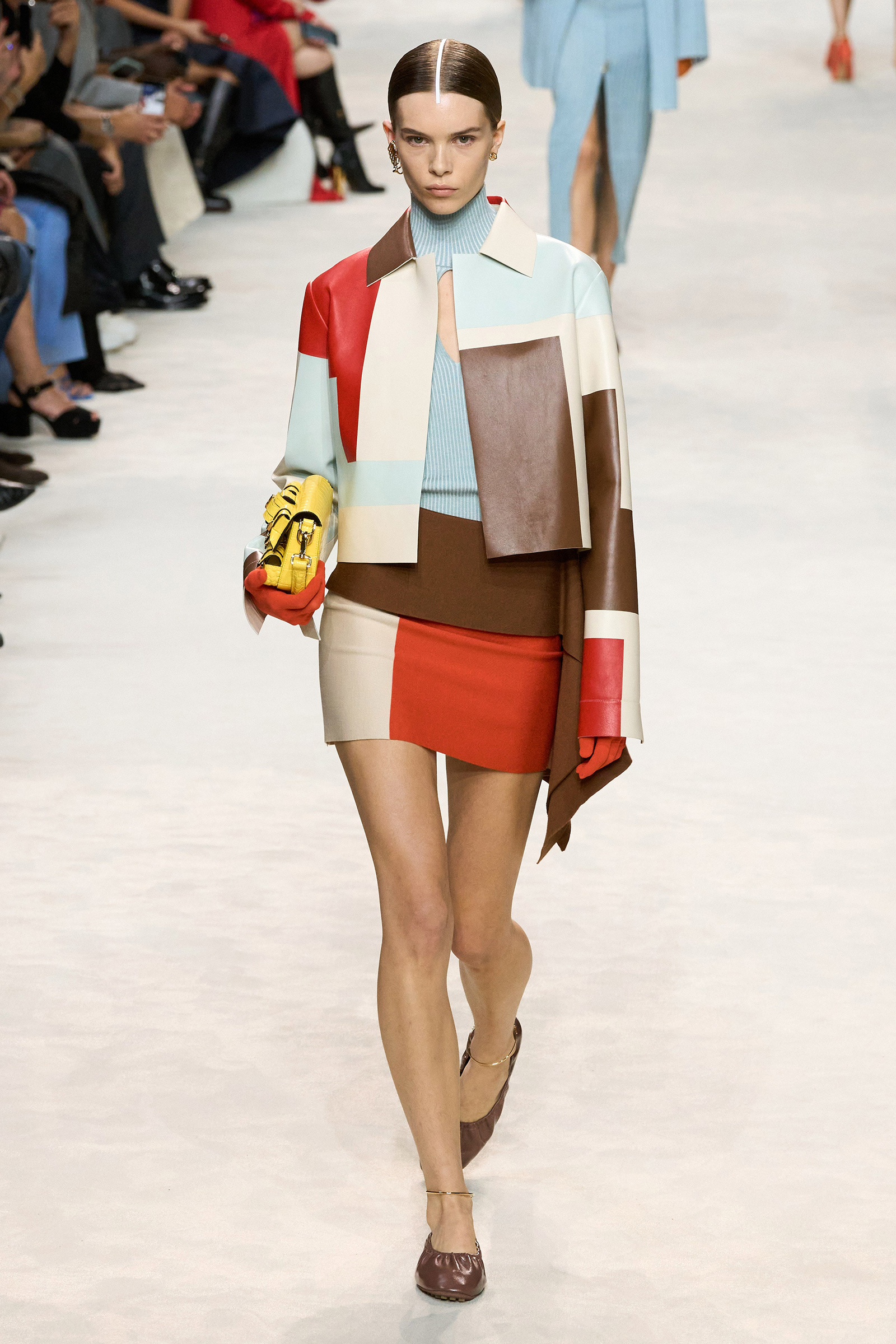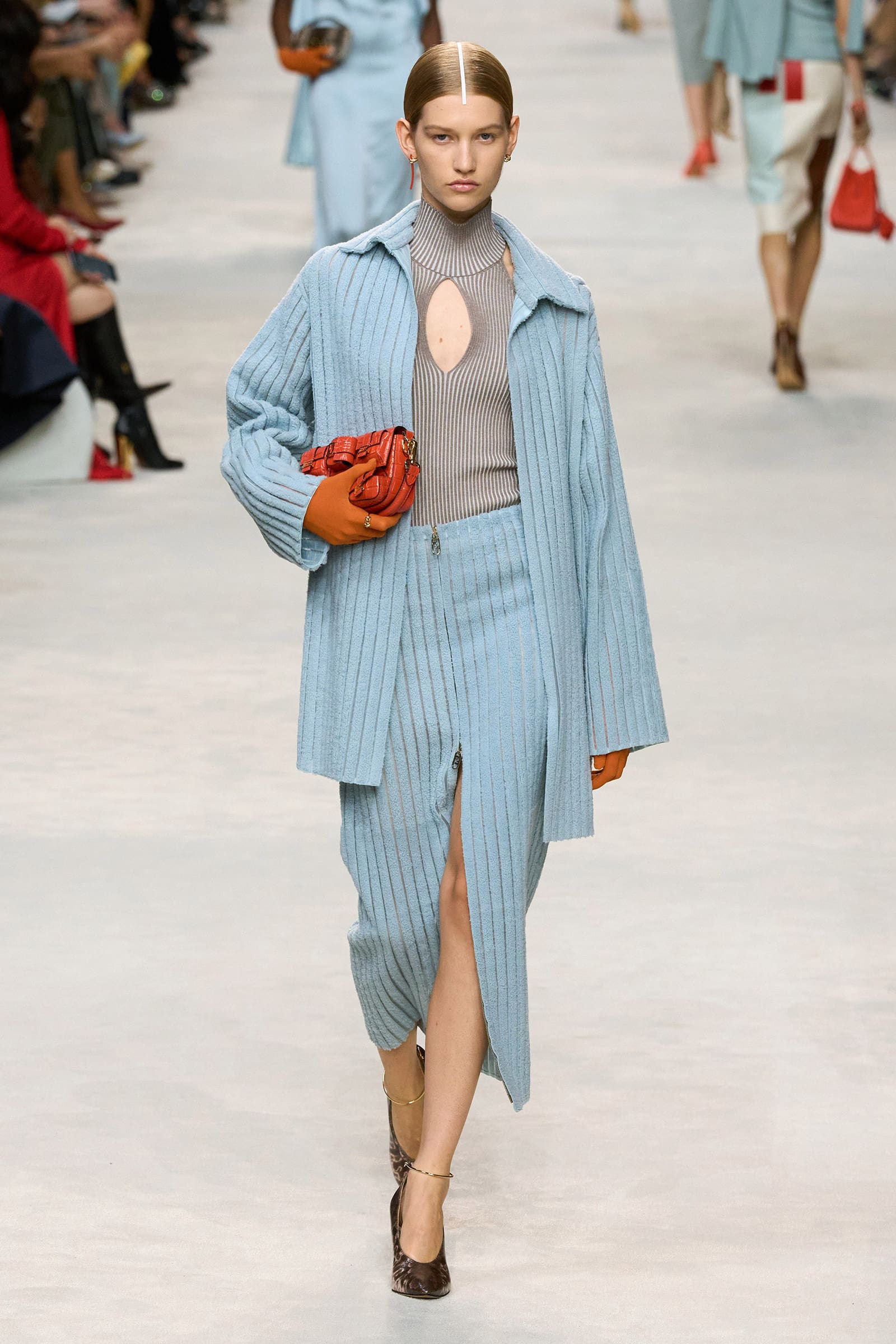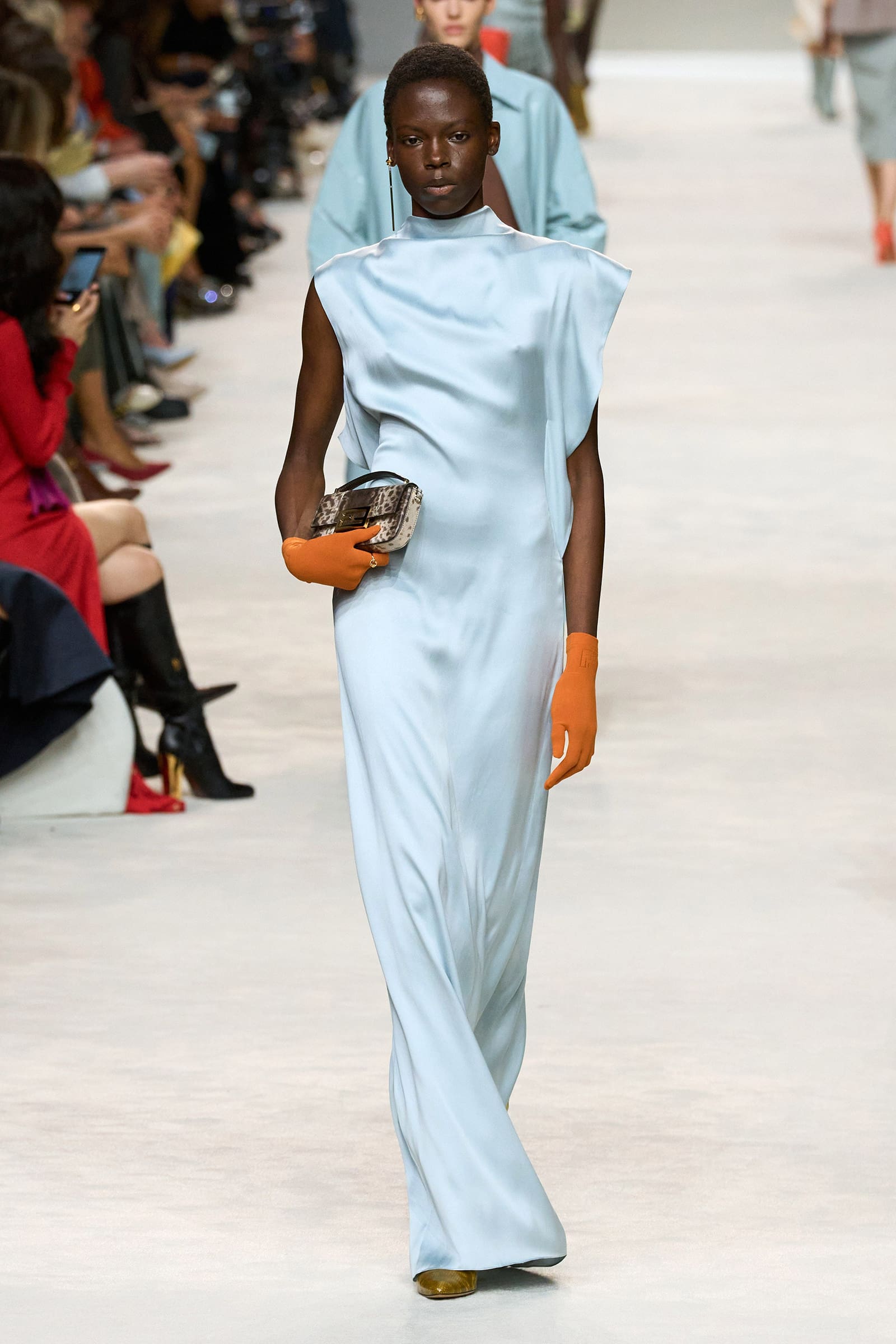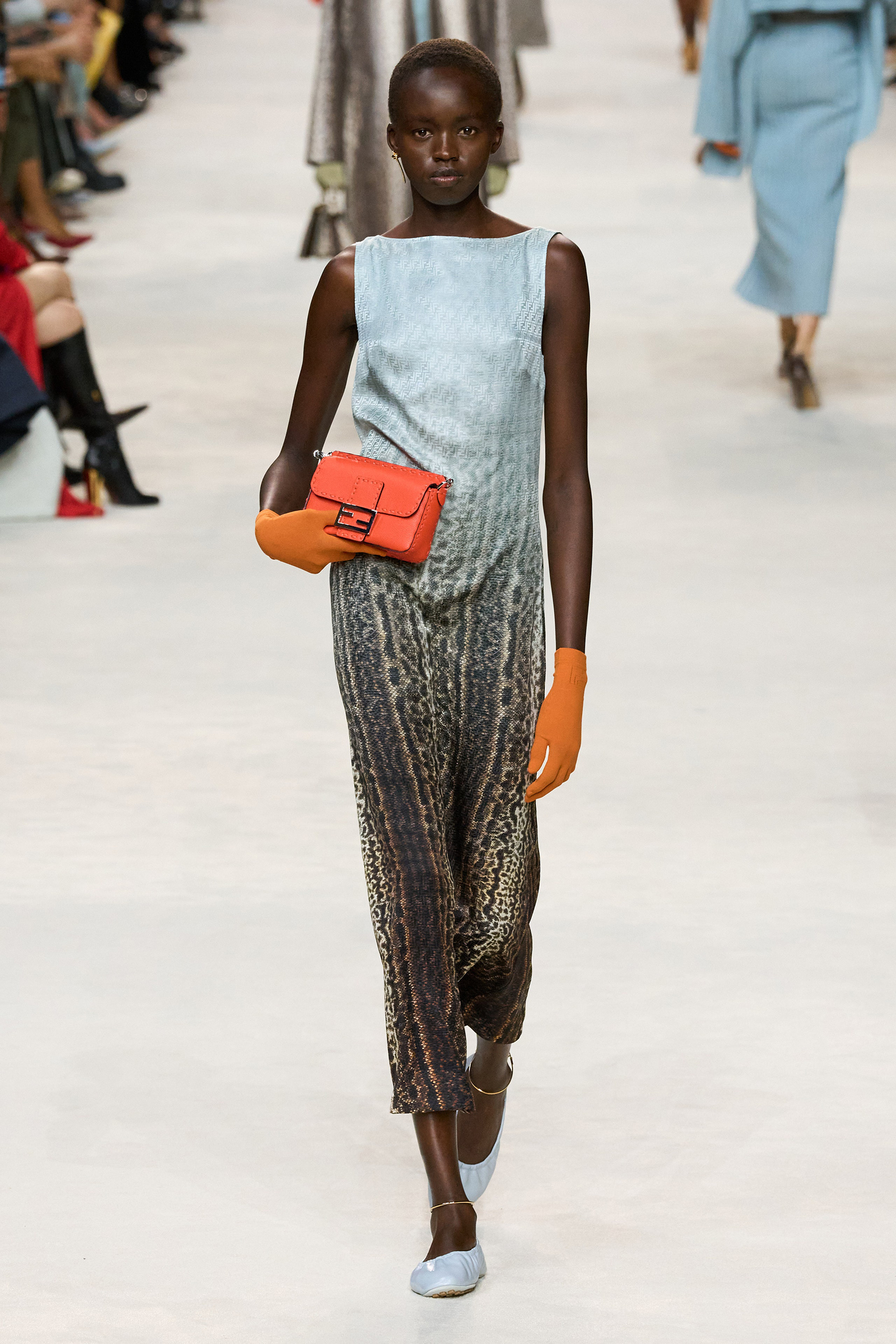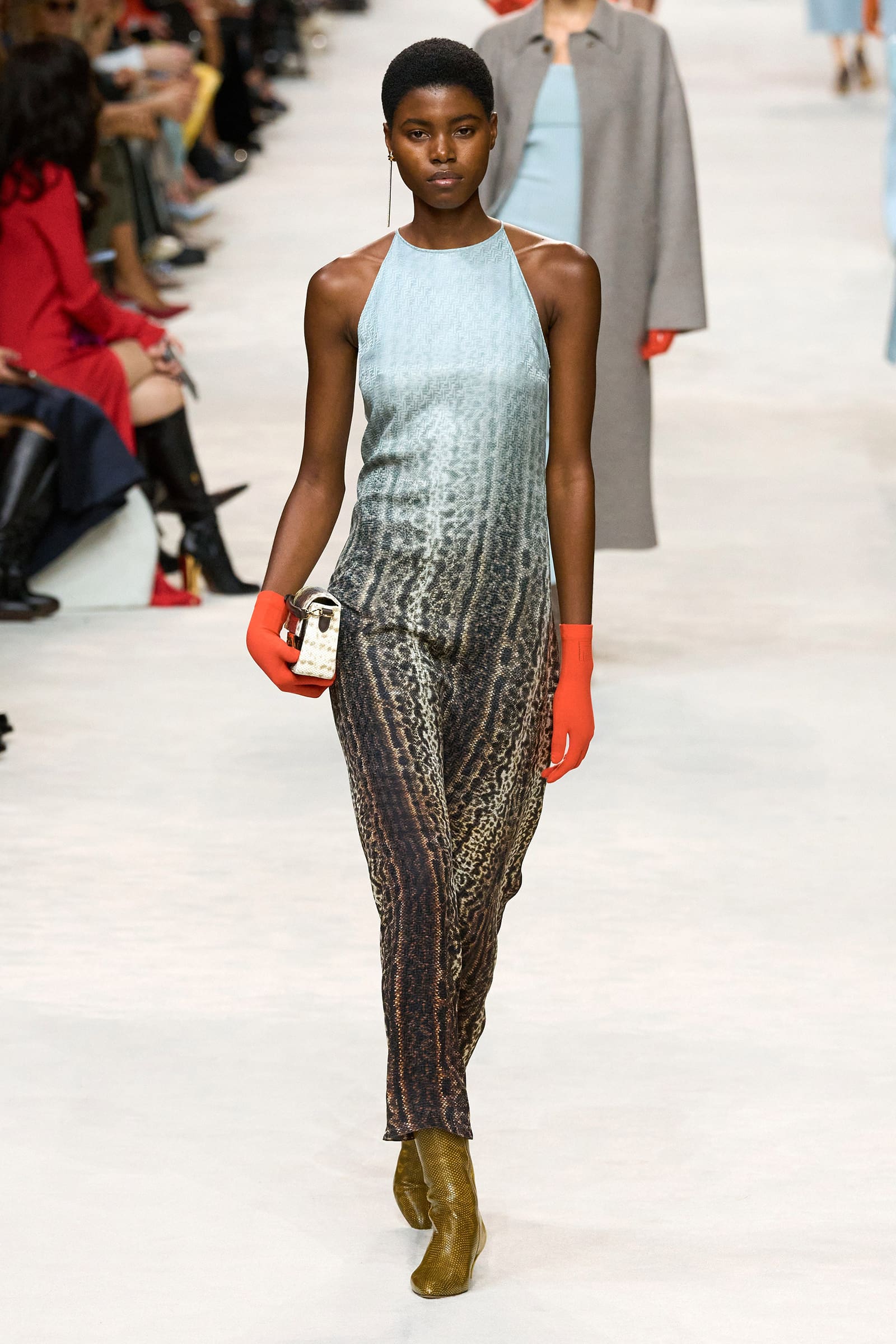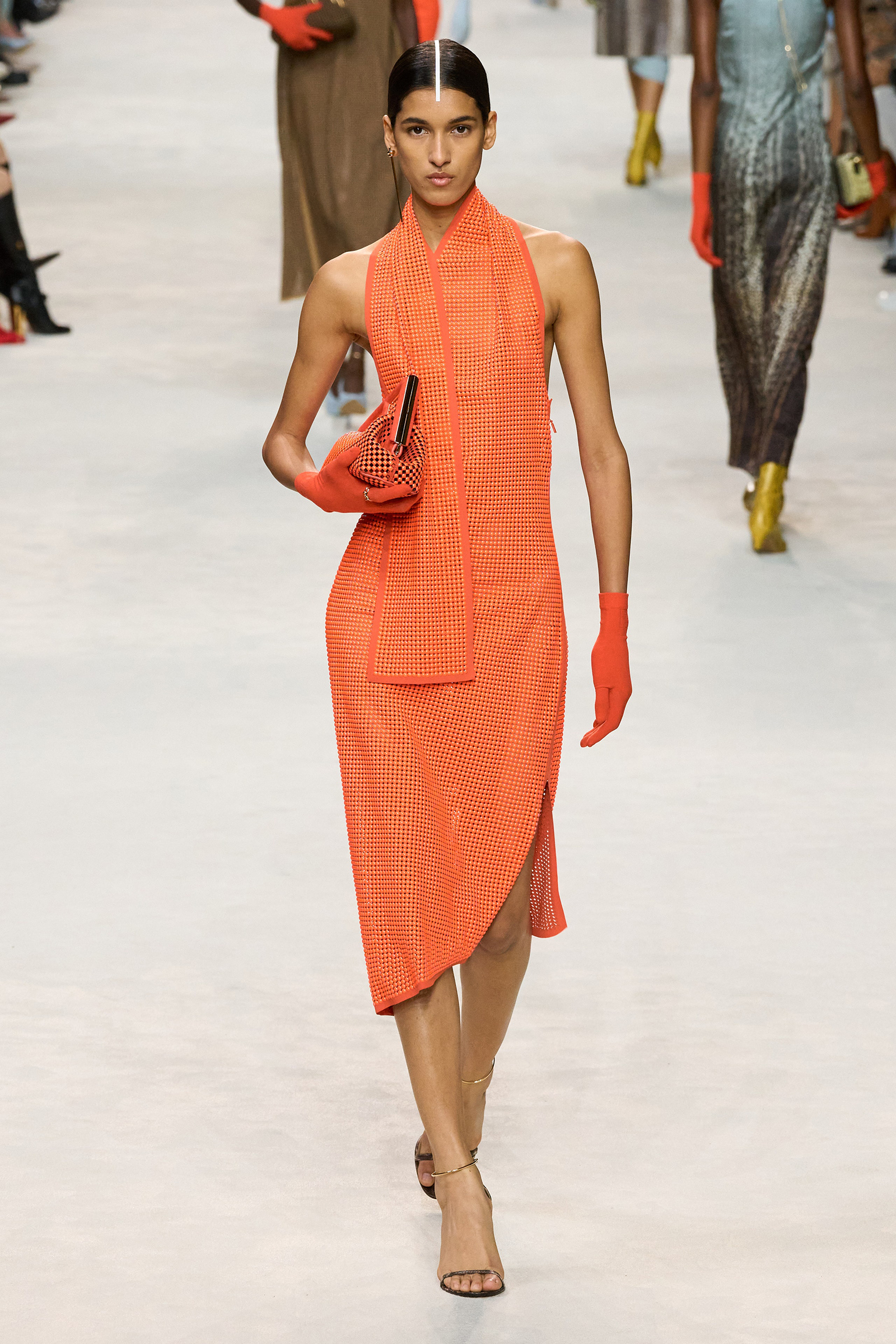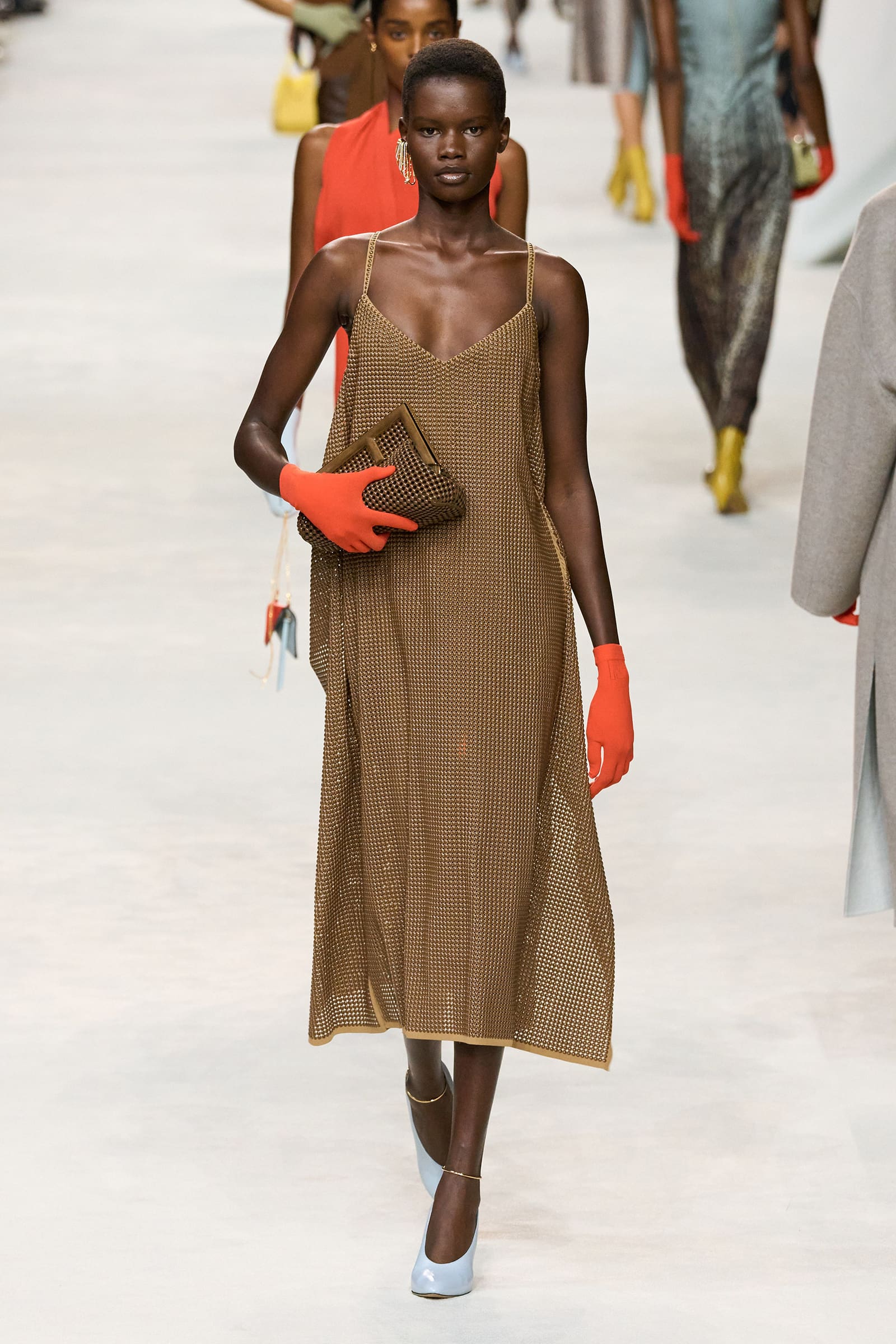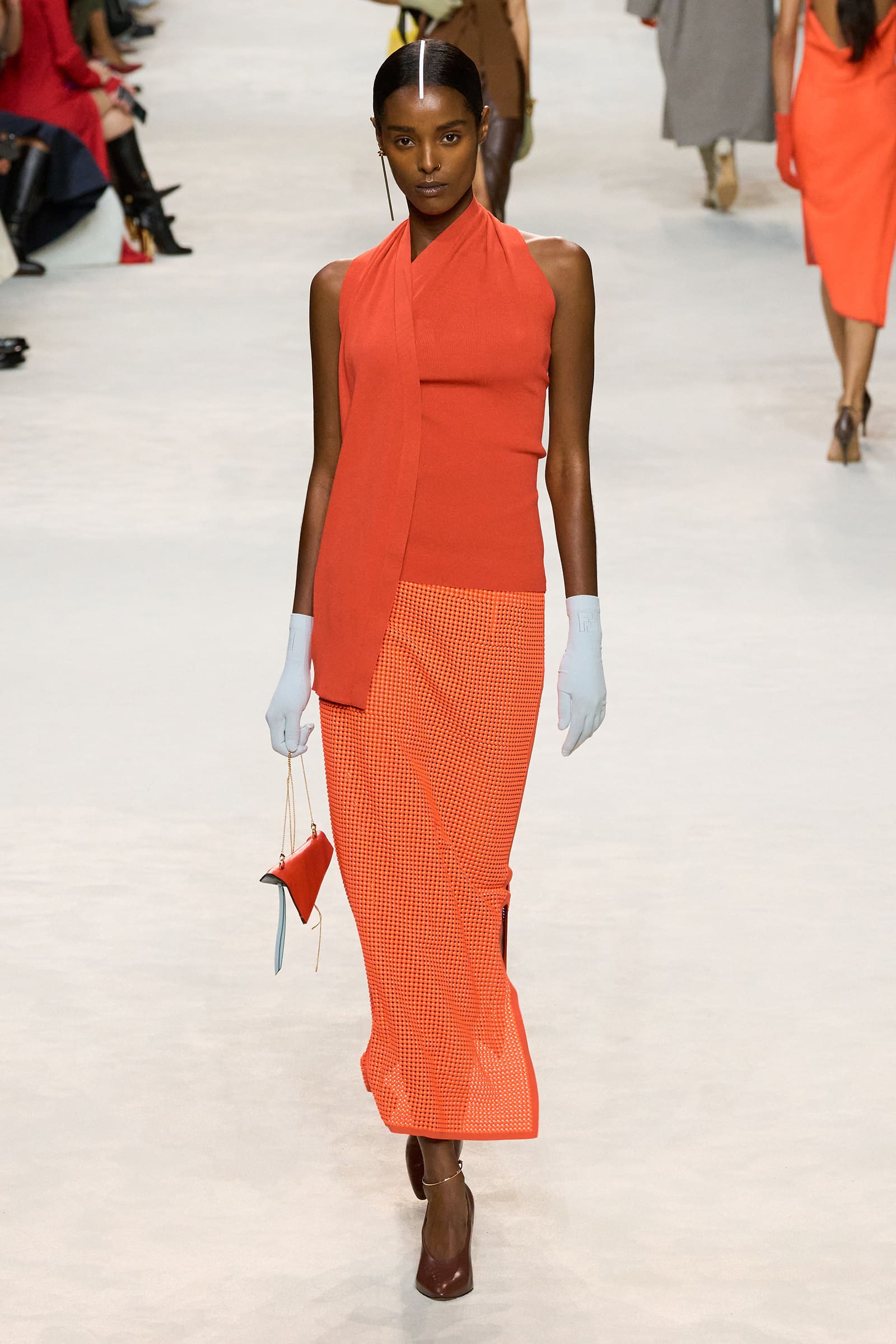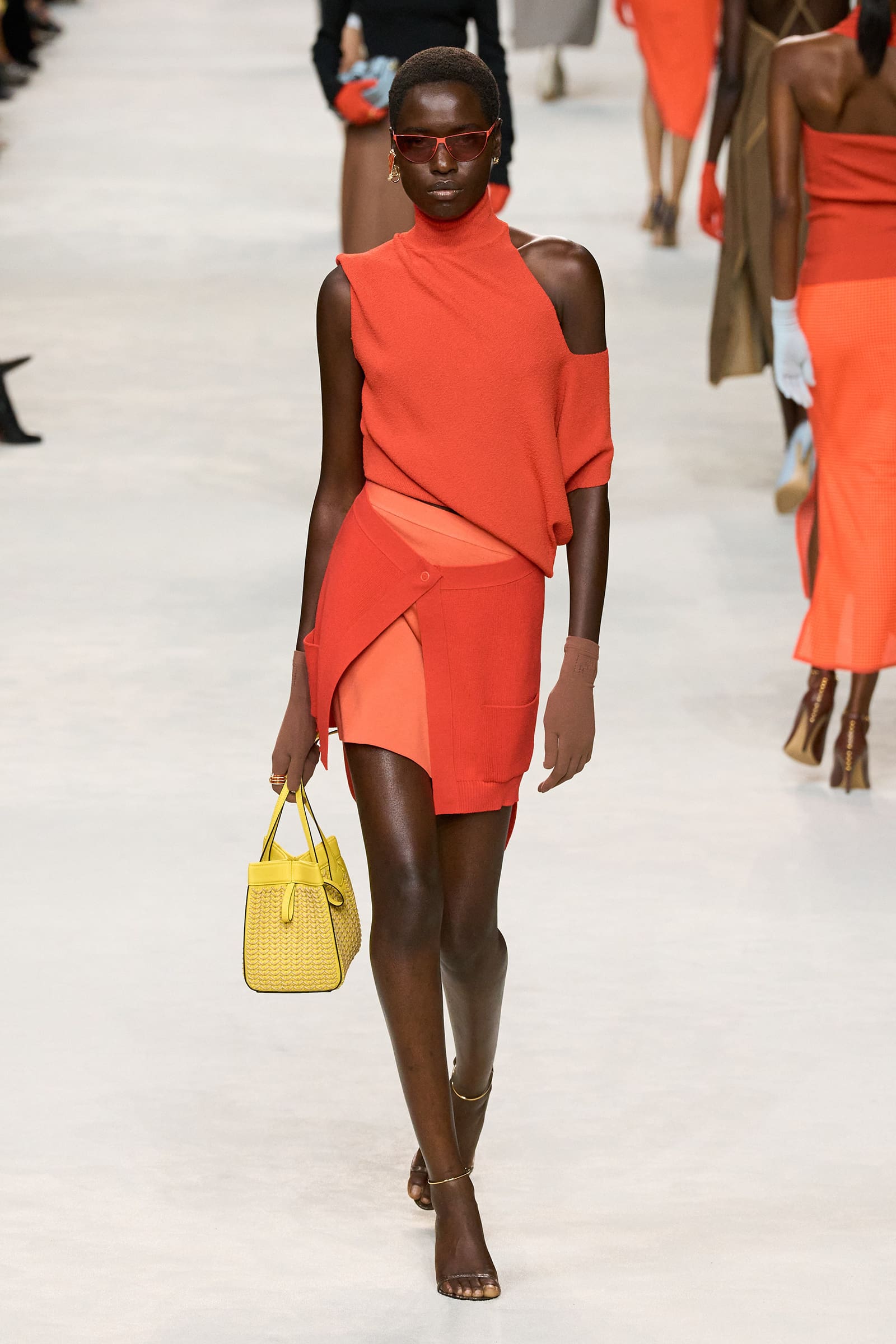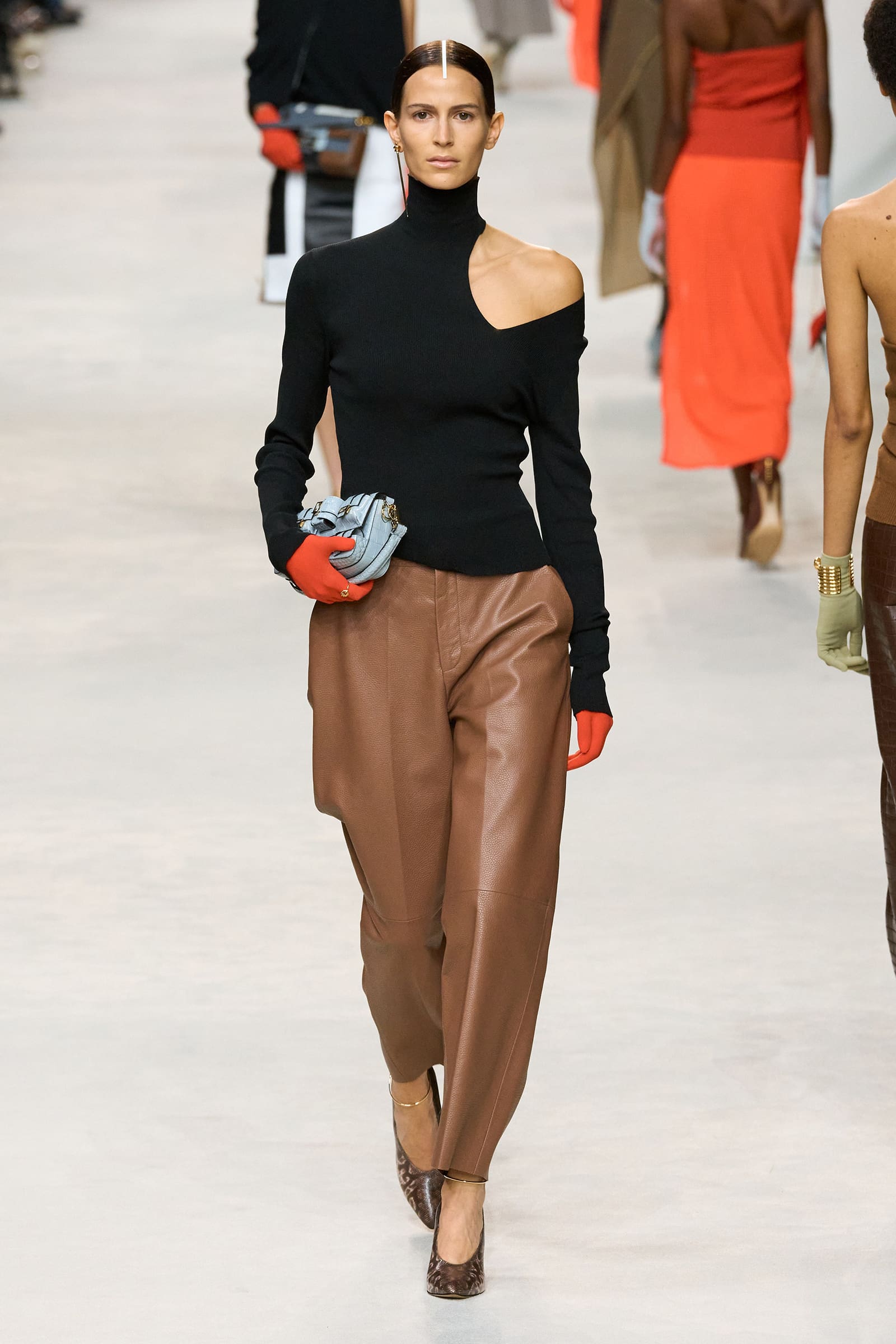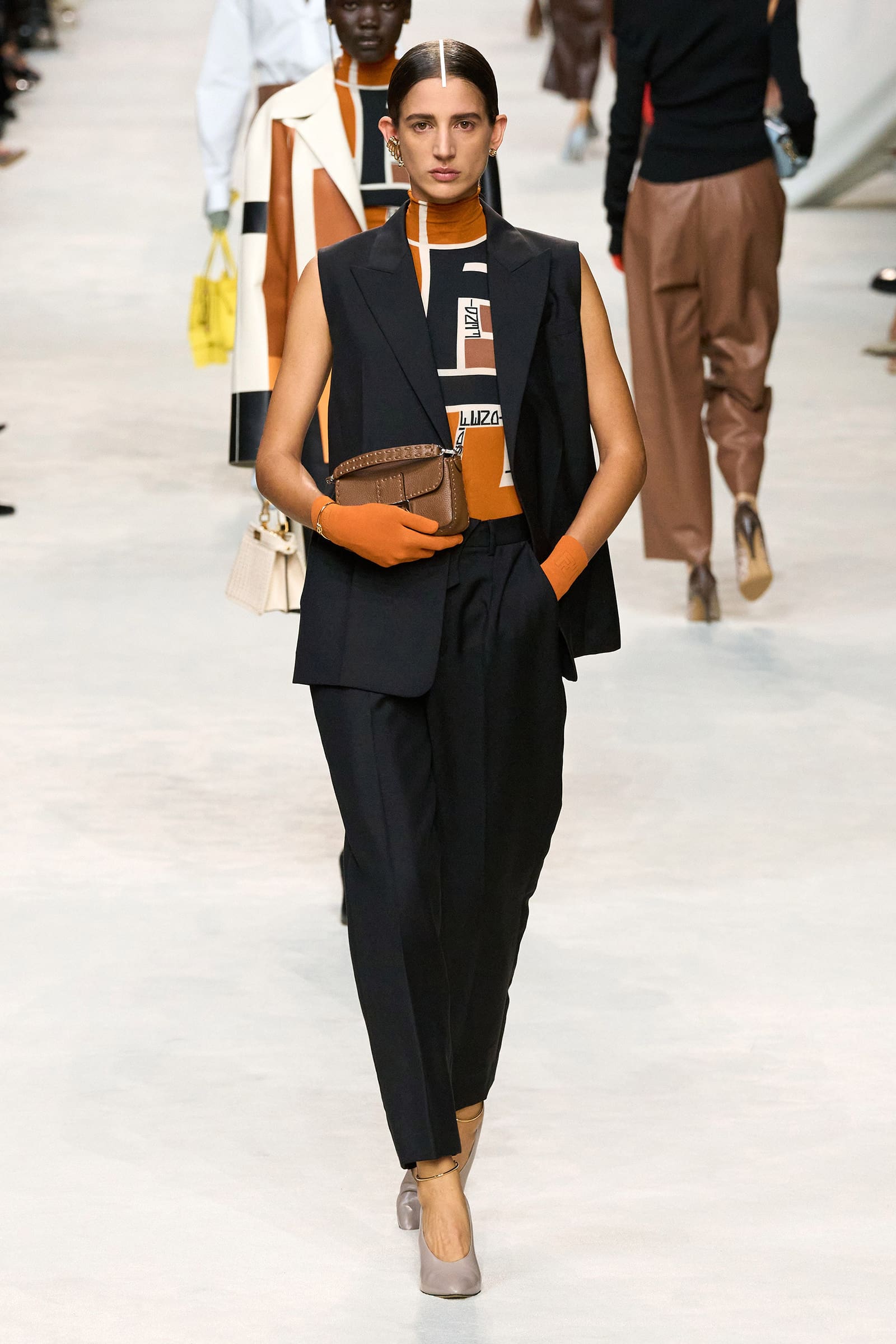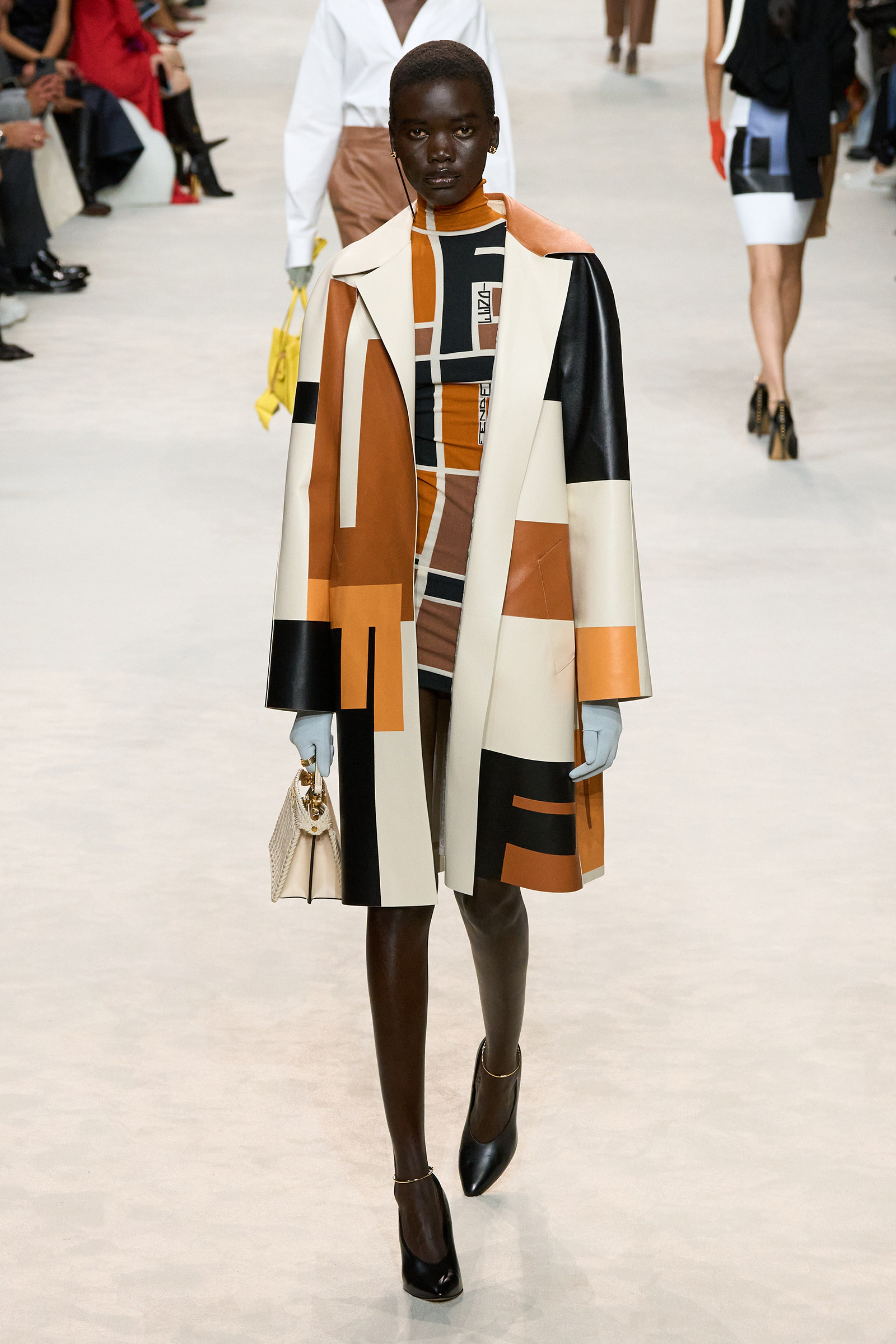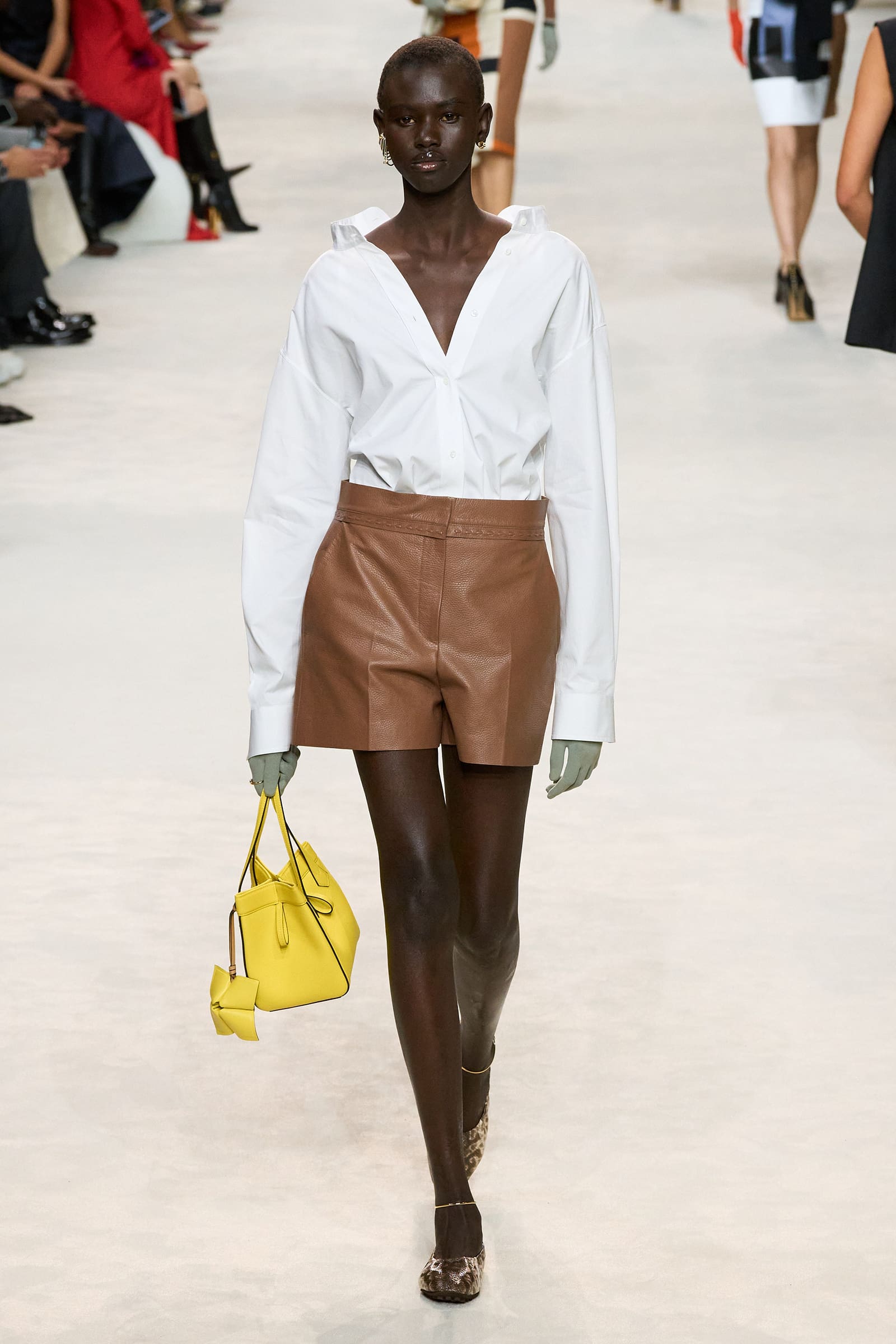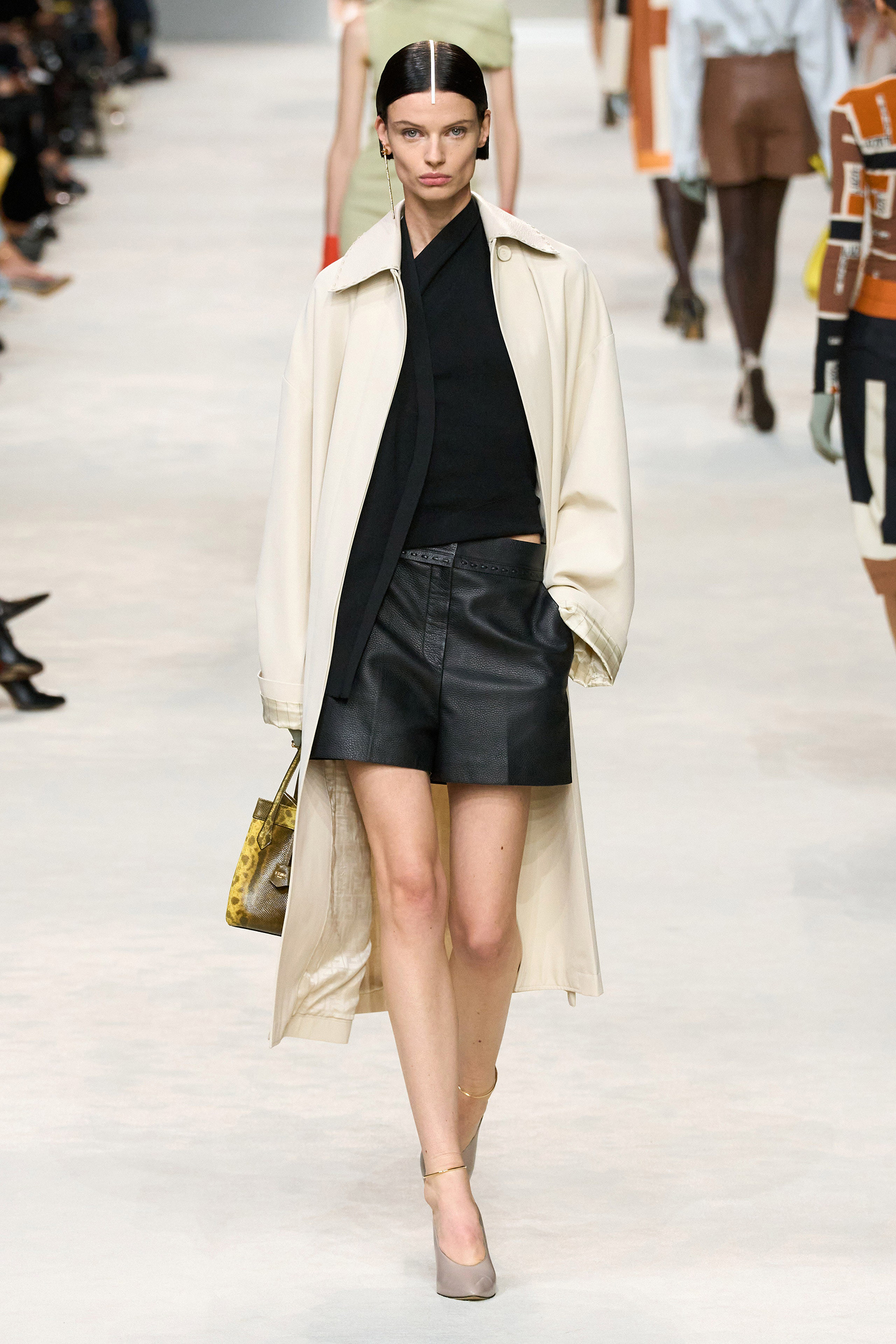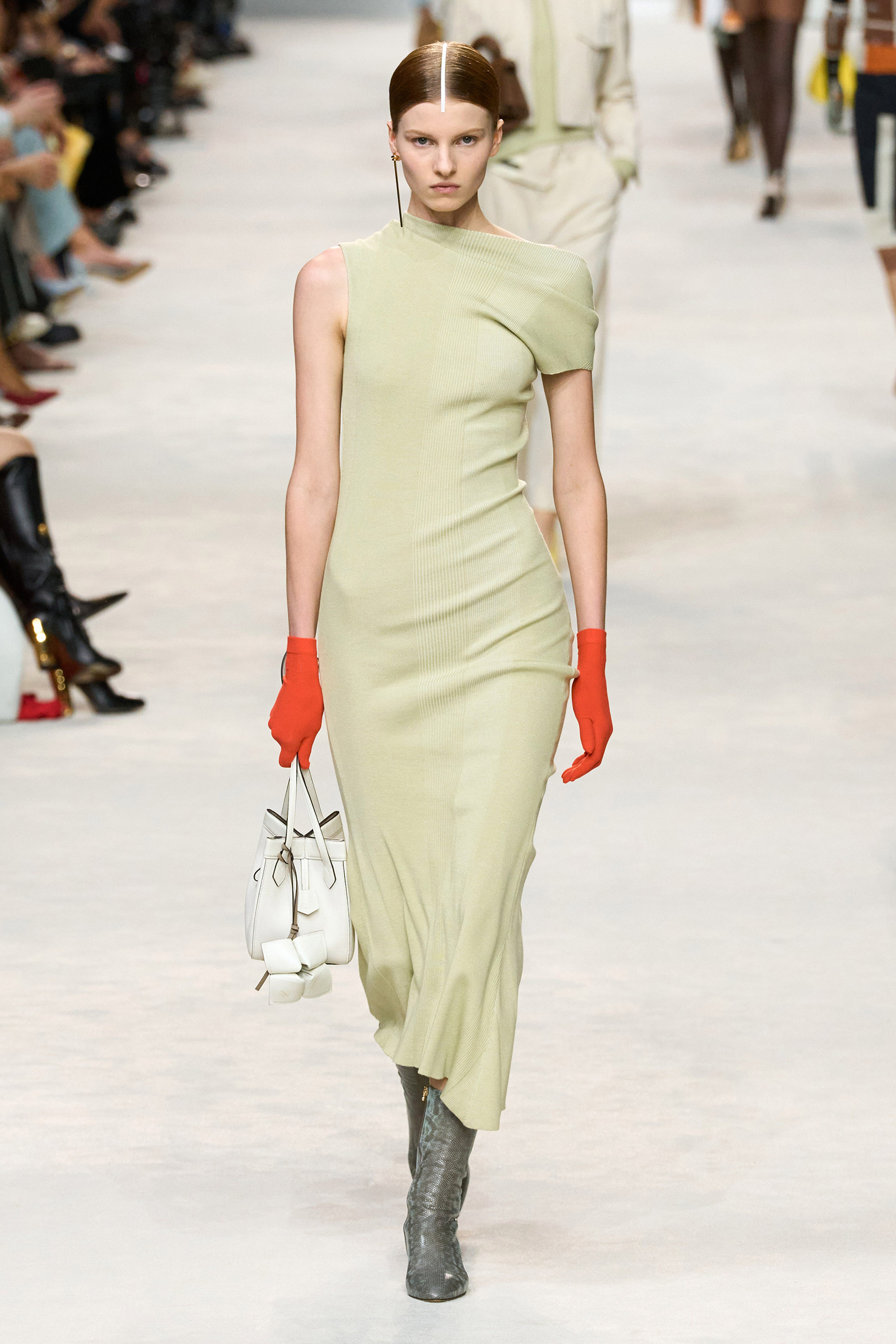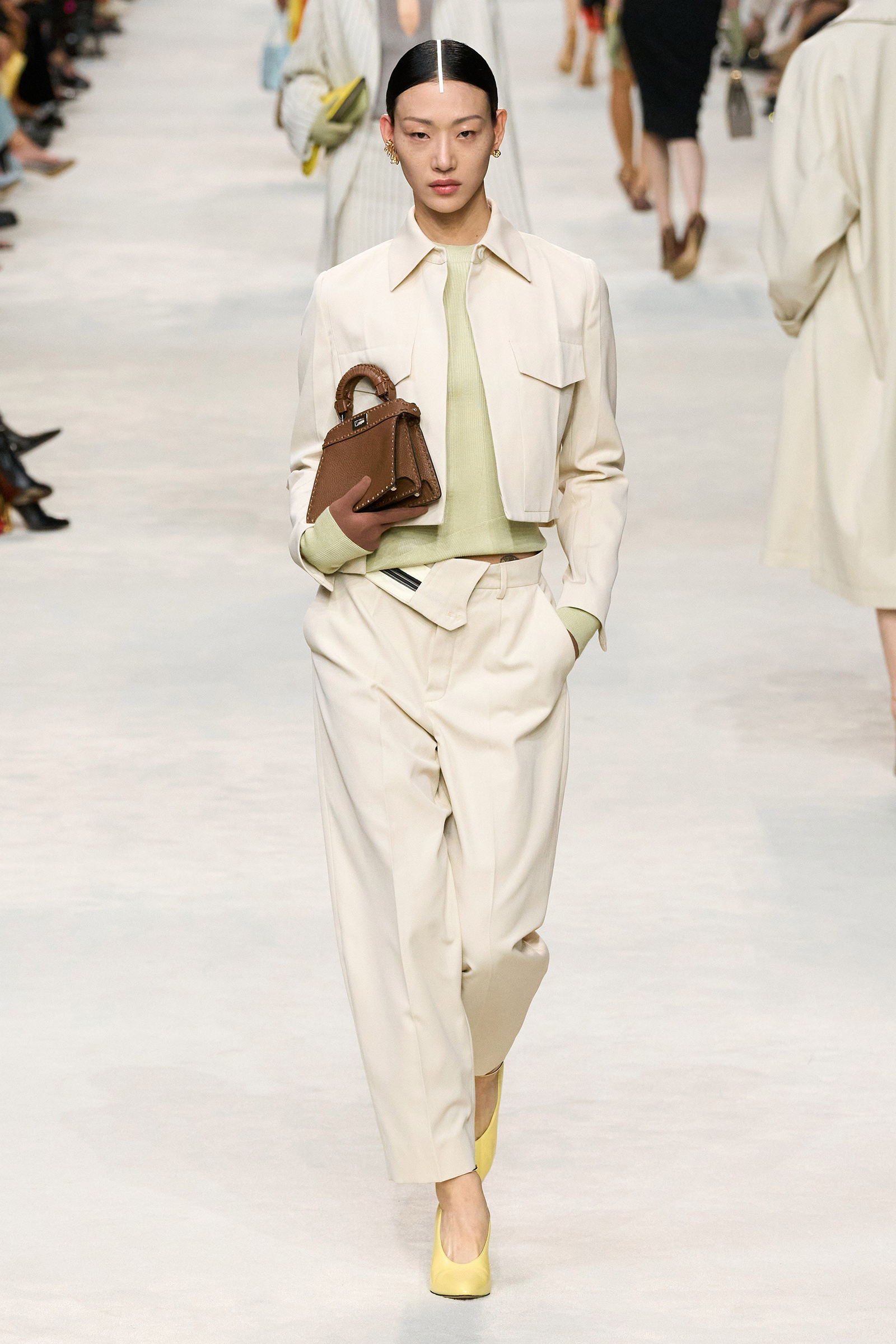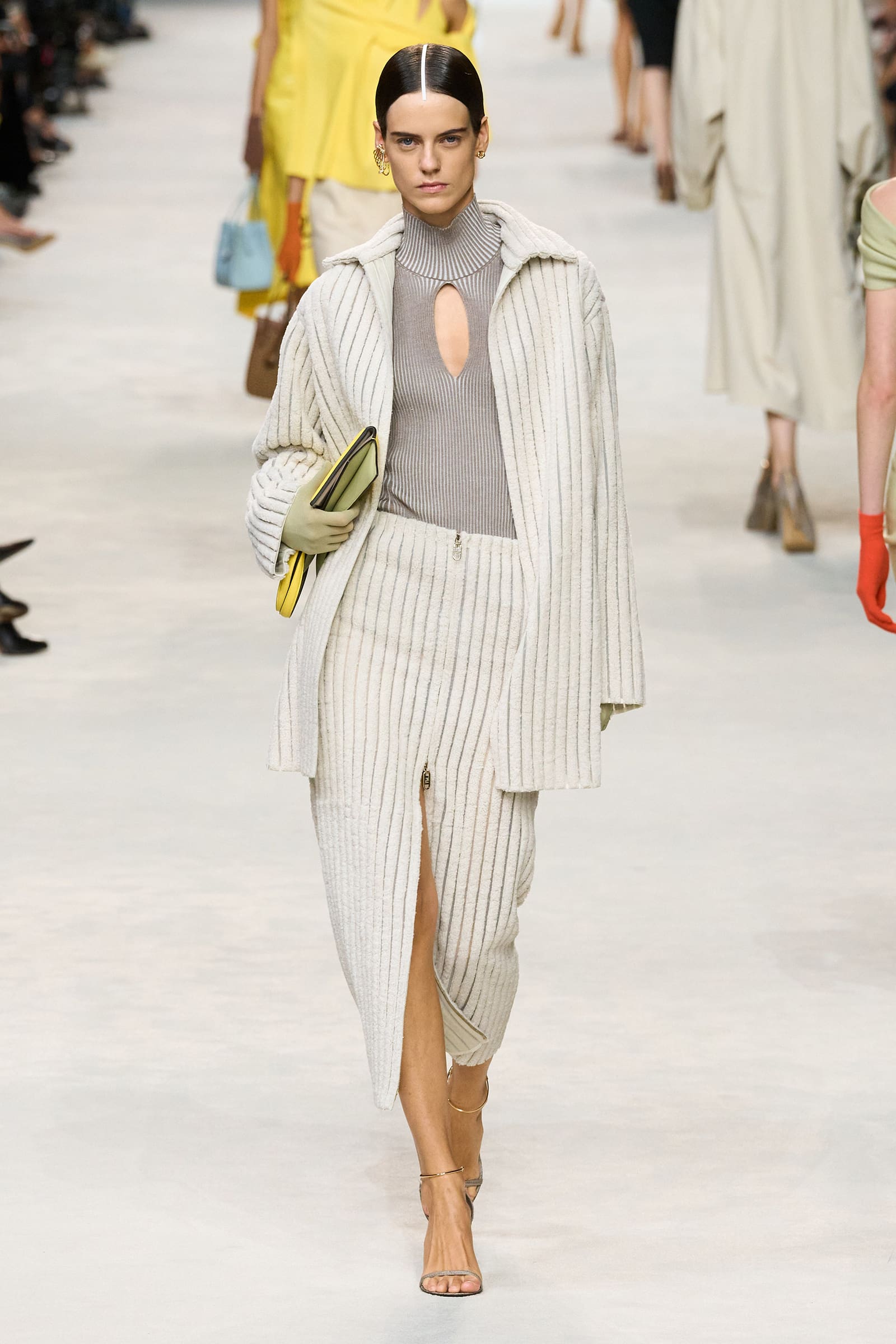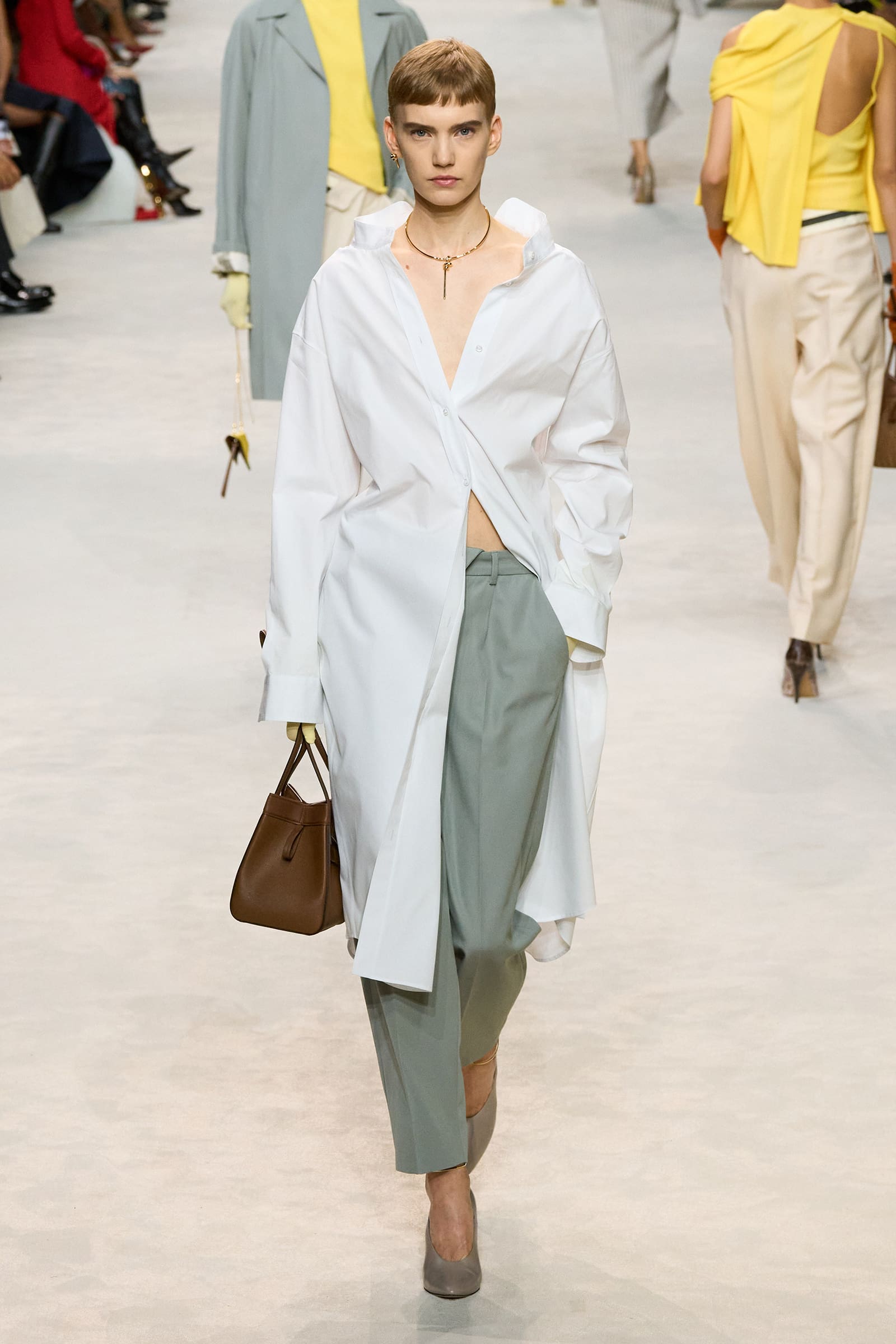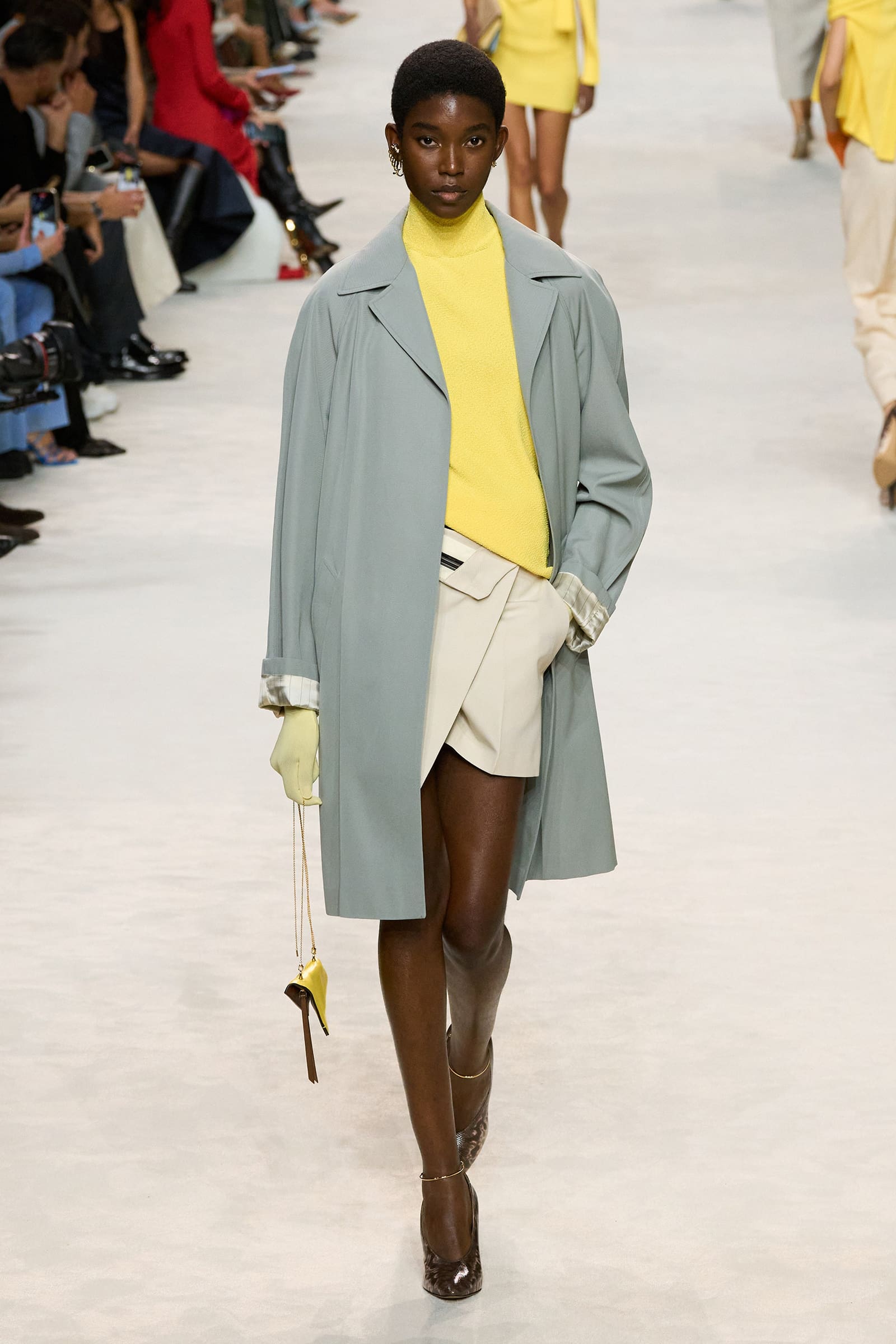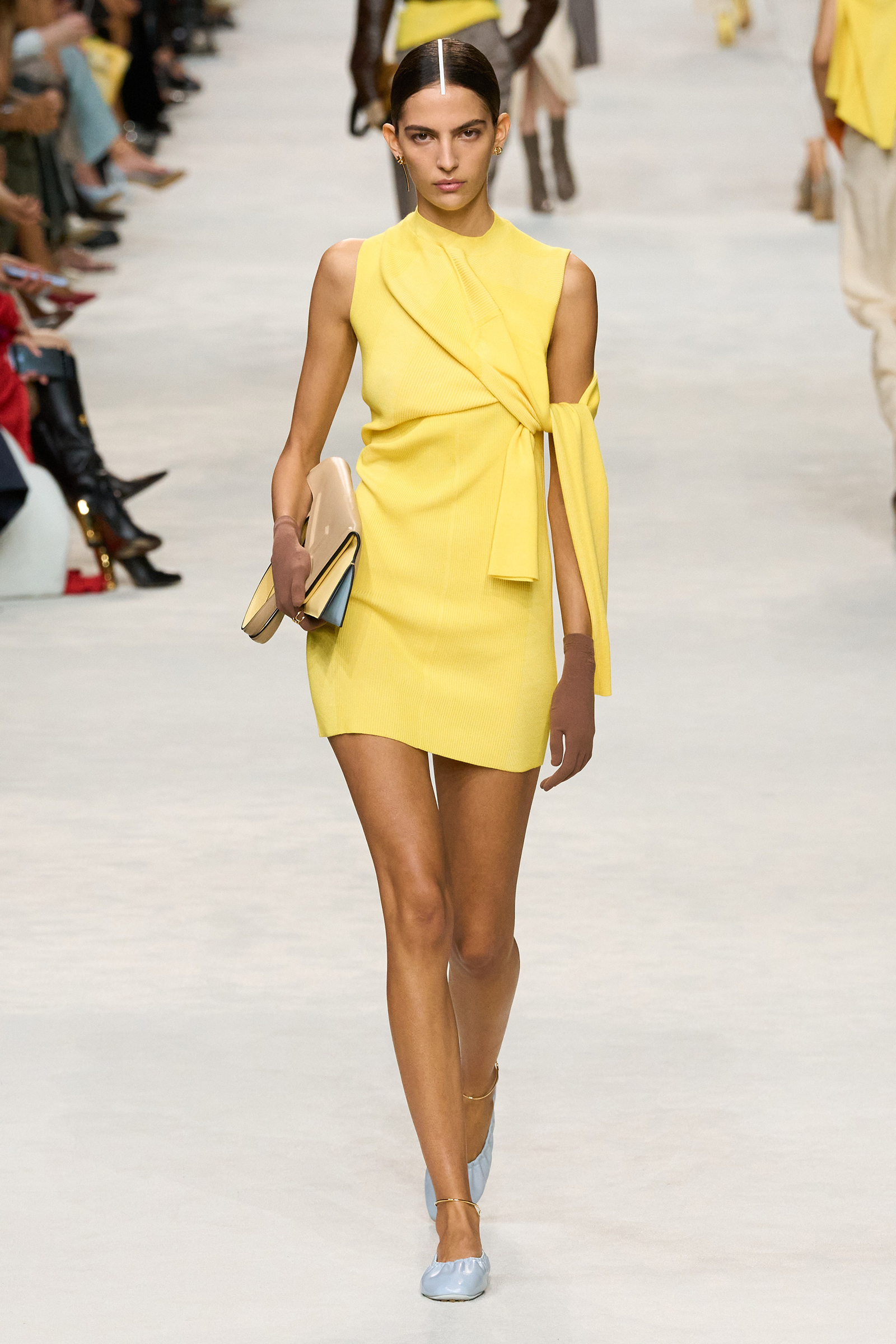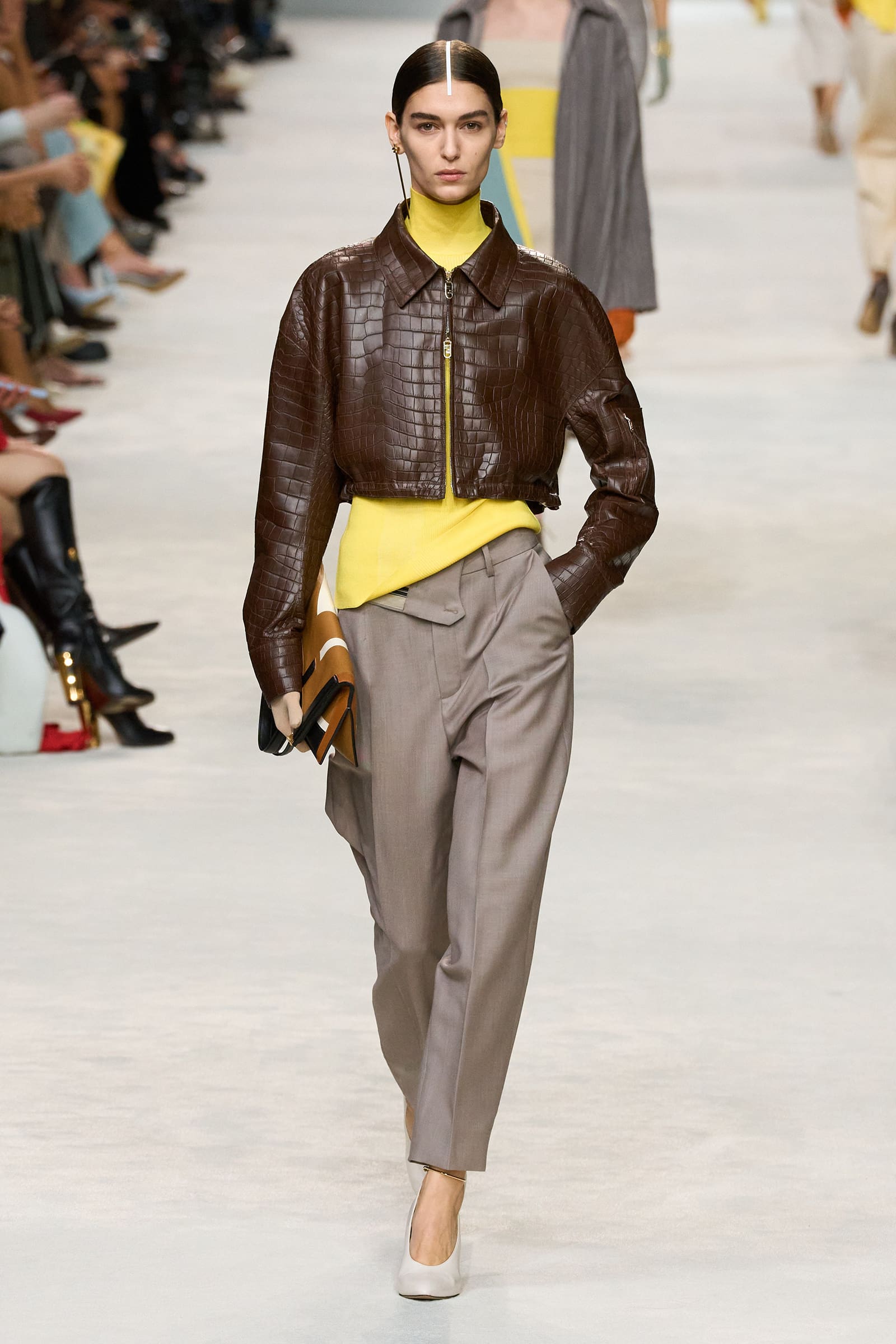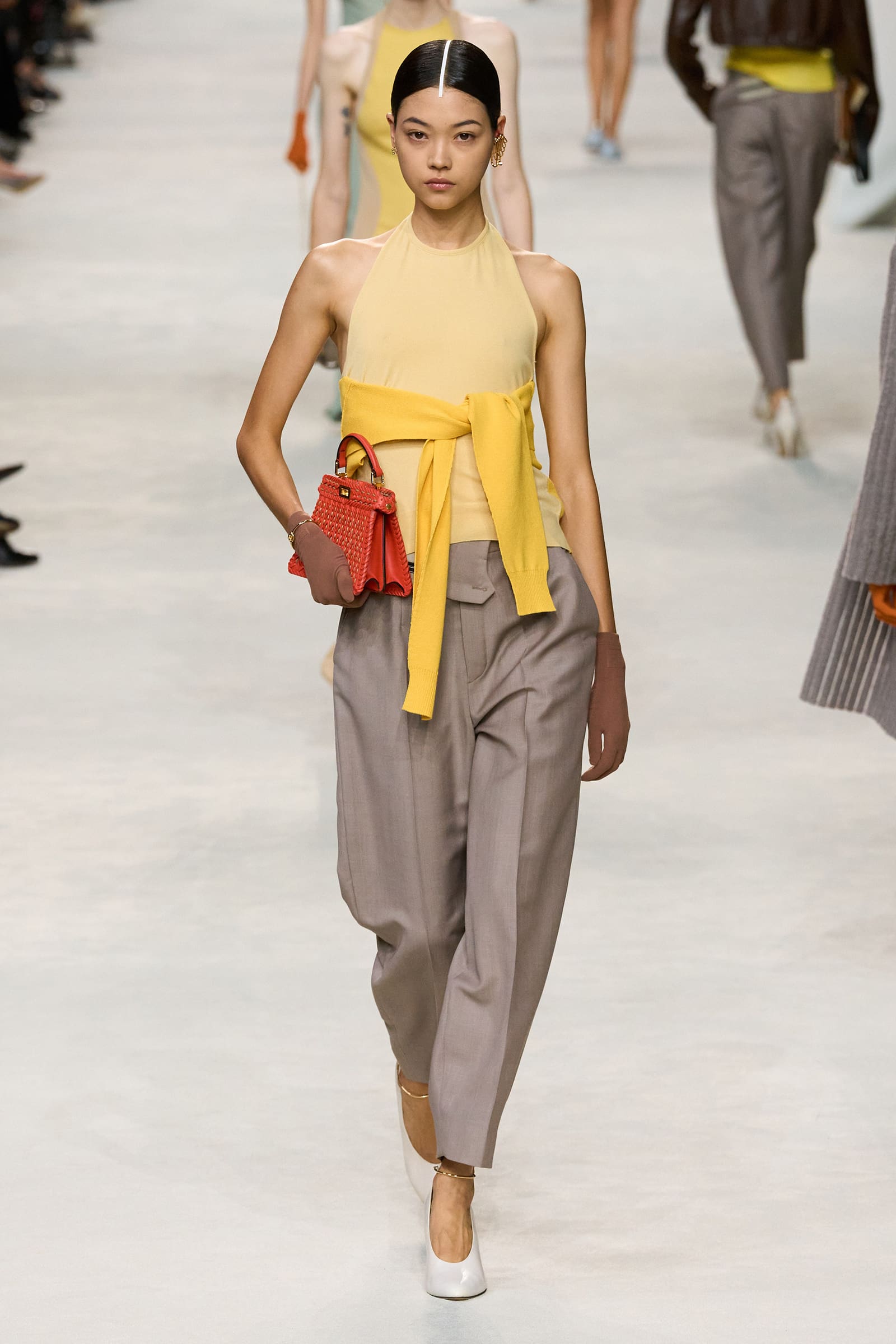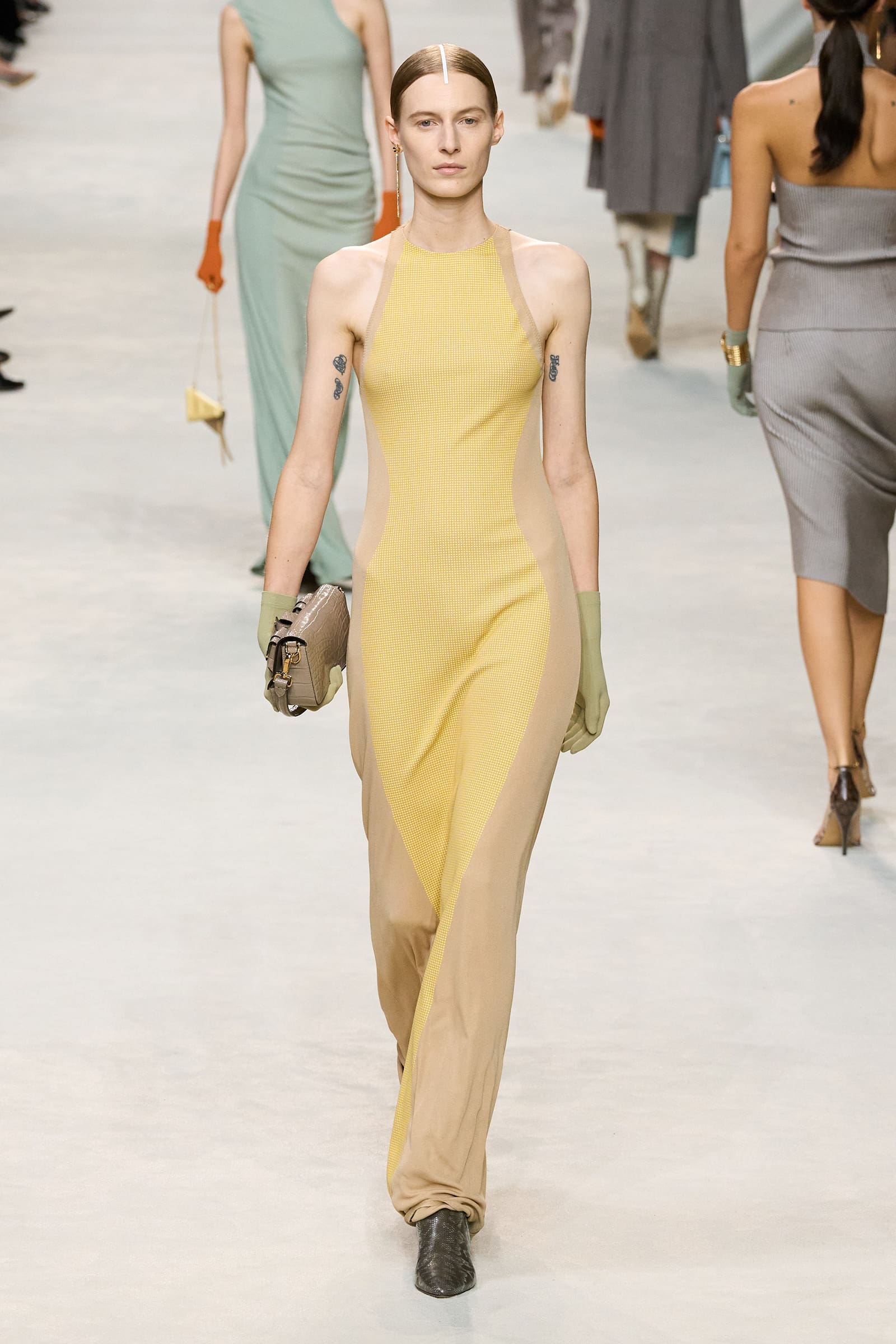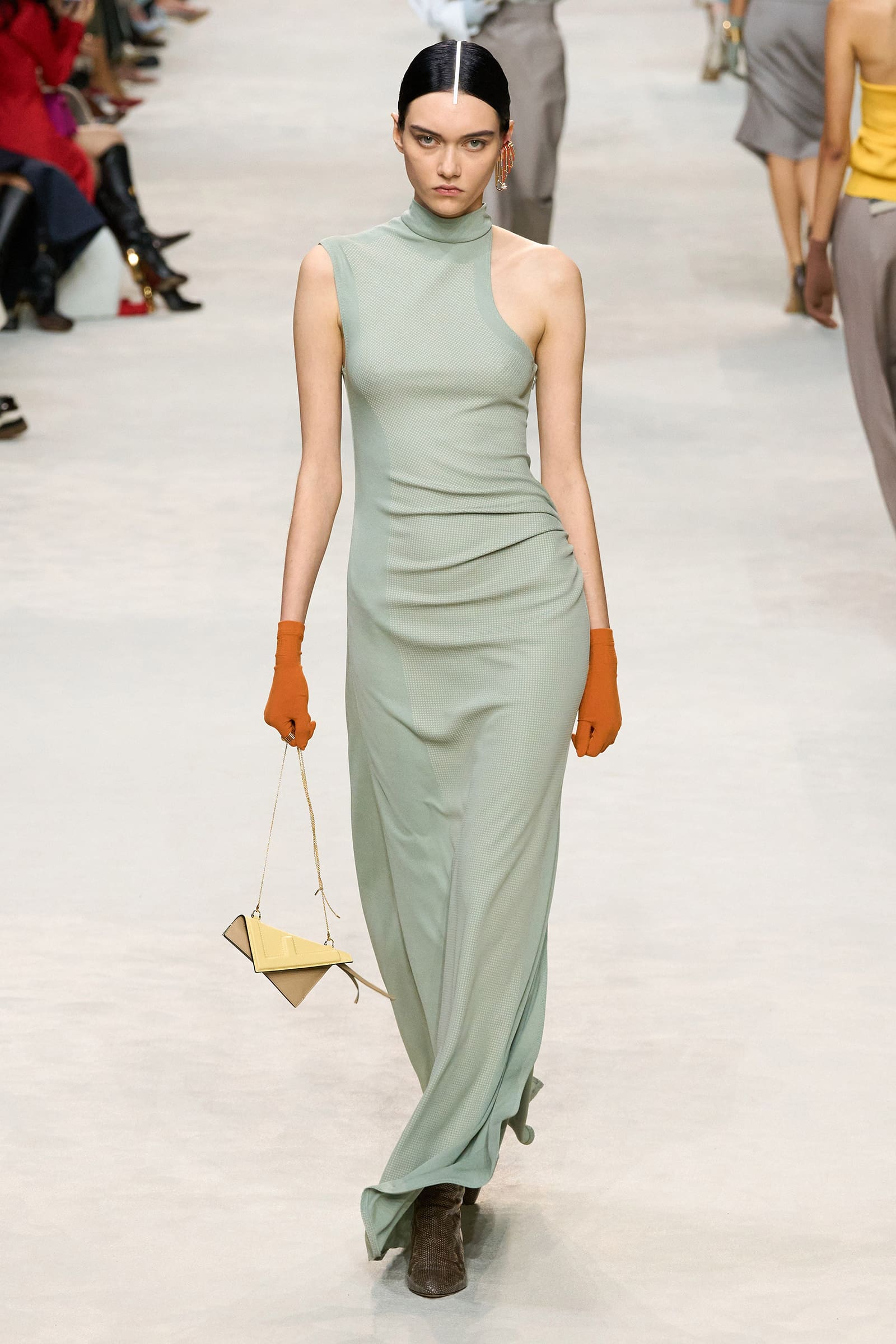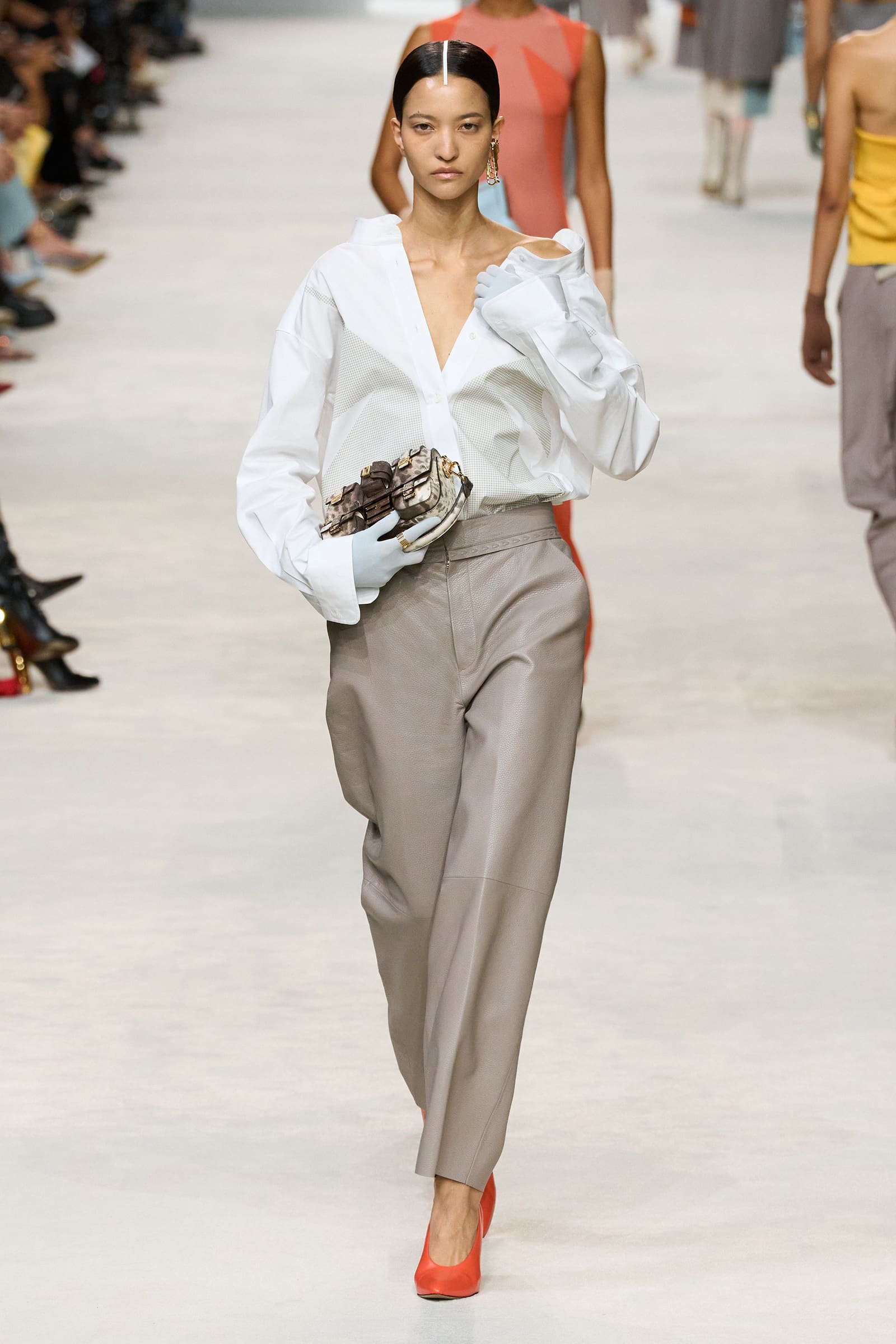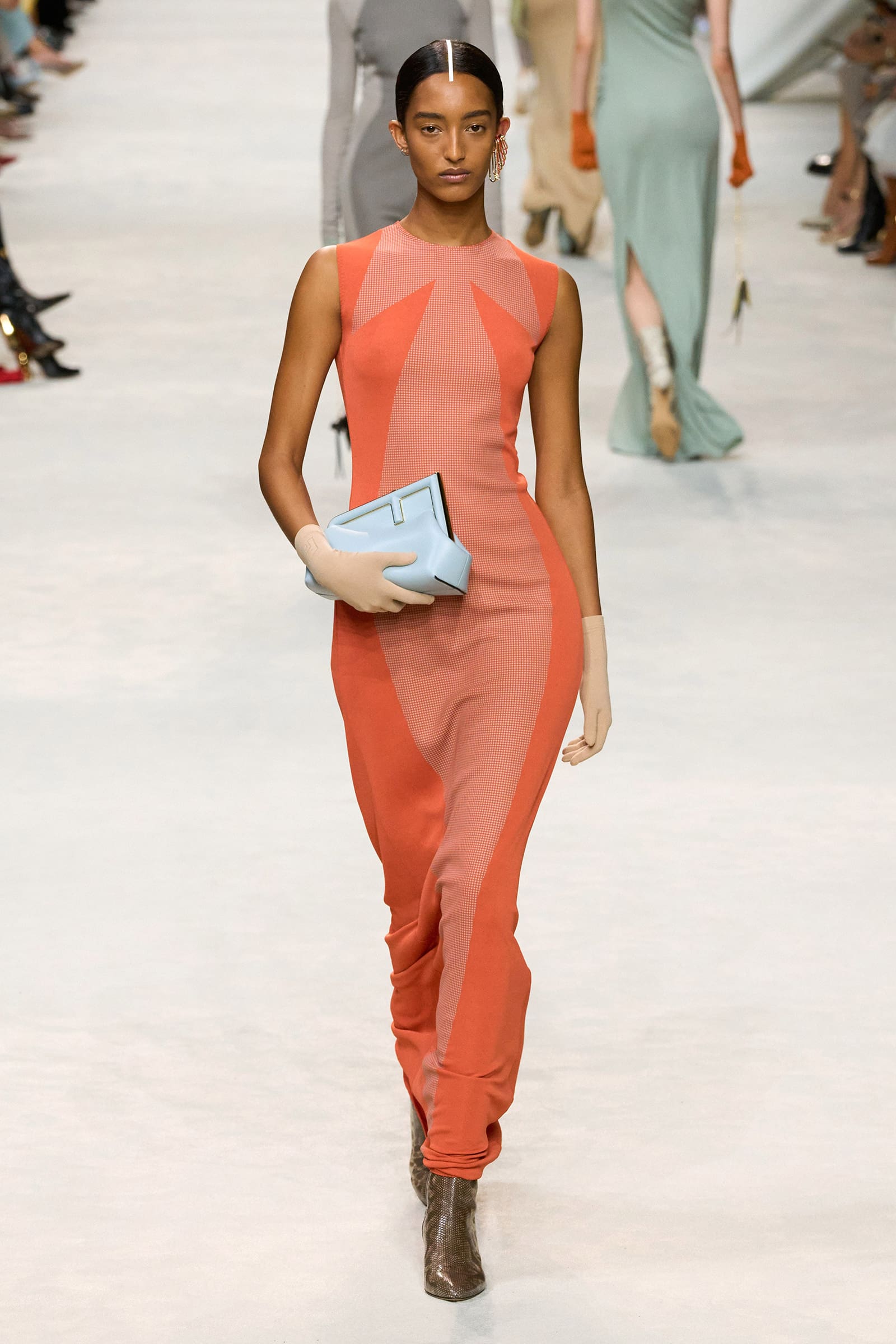
The look Kim Jones was going for at Fendi this afternoon was Roman insouciance: Appropriately enough, Jones seemed pretty insouciant himself. Asked at the end of a preview about a guest list that included Linda Evangelista, Naomi Campbell, Amber Valletta, Kate Moss, Demi Moore, Cara Delevingne, Gwendoline Christie, and many more, he said: “Well, my friends have come. This collection is very beautiful, and I really wanted everyone to see it. Milan can feel very quiet compared to Paris, so I wanted to do something—and actually also just to have a chance to see all my friends.”
Moore opened Jones’s debut show for the house back in January 2021. Since then the British designer has seamlessly integrated his codes and practice into the Fendi story, drawing inspiration from his predecessor Karl Lagerfeld, the Fendi family and its traditions, plus his own plethora of personal interests. Today’s chapter was informed by Lagerfeld’s spring 1999 show for the house and its powerful practicality drew from the Roman women—not least the Fendis and their closest professional cohorts—with whom Jones interacts when serving this house.
The designer imagined the show as a fantasia of Fendi-clad passers-by seen on his morning Roman route to work. That takes him down the Spanish Steps and past the Trevi fountain: On the runway such monuments were recast as titanic Fendi handbags—each one as long as around three 6-foot-plus models laid side to side—a set design that recalled Jones’’ shows under his own name back in the aughts.
His collection was acutely and minutely designed to generate impact through detail, fit and finish. Mannish mohair tailoring (including skirts) was stripped of all visible closures and fittings, then cut with arms designed to be turned up, plus waistbands switched inside out, as if snaffled from a minimalist uomo’s wardrobe. Knitwear blouses, cardigans, skirts and dresses were architecturally entangled with each other against the body, creating striking new forms from conventional ingredients. Rib knits were expanded into a sort of jumbo-jumbo shearling corduroy, slightly flocked, used in a section of oversized work shirts, coats and split skirts.
Washed silk dresses were printed to gently bleed the double-F logo into snake print, while dresses fashioned from grids of shiny circular silicone studlets heat-bonded onto jersey had a solid look but the movement and drape of some unctuous liquid. A 1990s puzzle-print of the double-F was pulled from the archive to be revived in abstract panels of napa leather bonded into dresses and coats. The strips of material falling from the waist of two opening looks were peeled-apart explorations of this same print. A paper-like, shiny-finish linen was used to fashion a cut-away dress in the same canary yellow that featured in that Lagerfeld collection 24 years ago.
To counter the titanic proportions of the bags lining the runway, those grasped by the cast were smaller—some minuscule—variants of Fendi stalwarts including the Baguette, the Peekaboo, the Origami and First, alongside a new shopper-meets-clutch named the Flip. The Selleria top-stitching that is a feature of these bags was reflected in Delfina Delettrez Fendi’s jewelry. The models’ hair often featured an emphasized parting, something we had time to consider as they made a for-Fendi unusually relaxed pace down the runway. And the Jones favorite Max Richter x Dinah Washington mash-up on the soundtrack they walked to telegraphed a sense of bittersweet, high-emotion contemplation. Jones, though, appears quite merrily into his groove at Fendi: He said he is already deep into the development of 2025’s 100th-anniversary collections.
This article was originally published on Vogue Runway.
